Holivar. History of Runet. Part 1. Start: California hippies, Spout and the dashing 90s
It is hard to believe that this Old Testament elder from the prosperous suburb of San Francisco is one of the founding fathers of Runet.
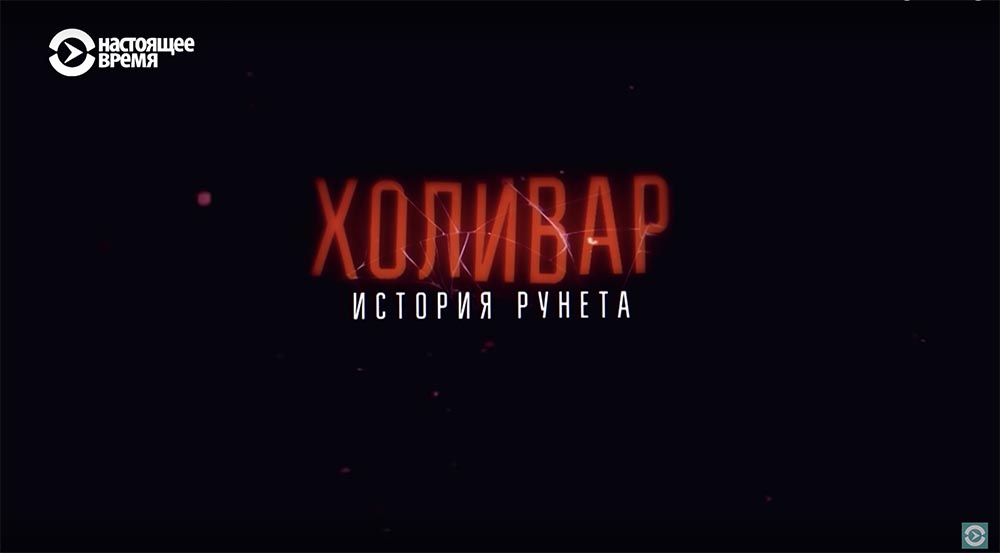
Joel Schatz - a scientist, visionary, idealist and businessman, in his youth loved experimenting with consciousness, psychedelic experience helped him to feel the interconnectedness of all elements of being.
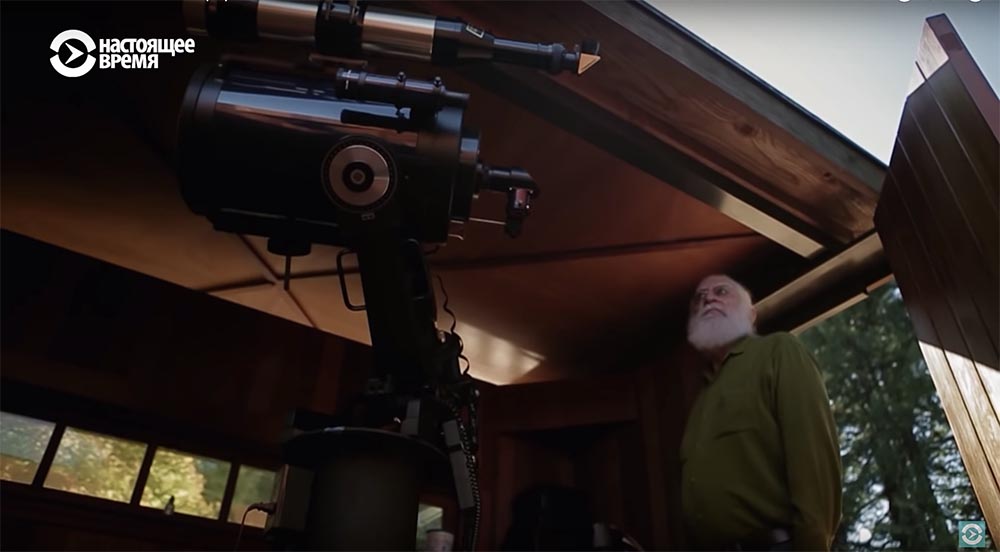
Joel Schatz: Hippy and IT Entrepreneur.
“I wondered why without the drugs the world seems so disconnected, then I realized that my mission is to develop information tools to help us all bring these separate particles of reality together.”
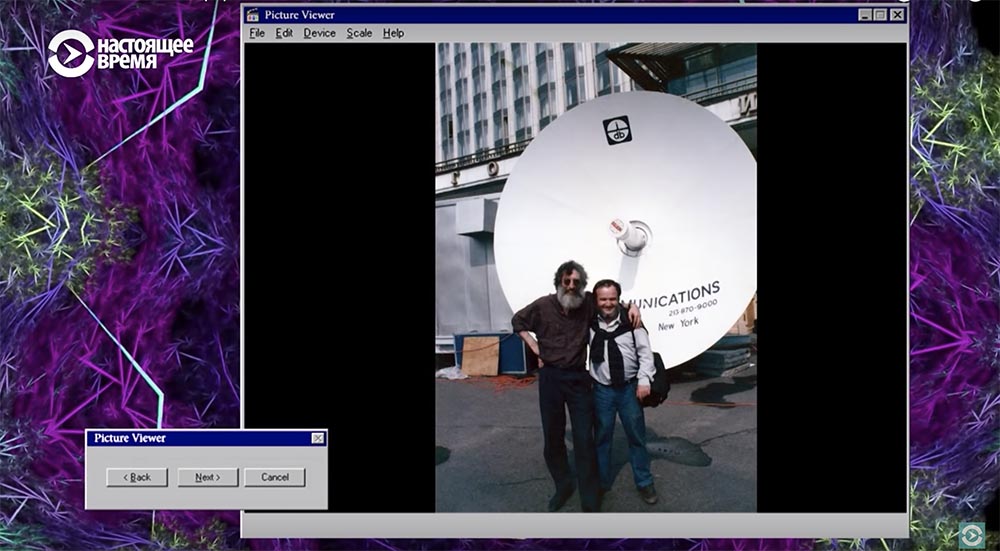
In the midst of the Cold War, Schatz went to the USSR to establish communications. Joseph Goldin, a Soviet mystic, visionary and entrepreneur, became his friend and likeminded person. Goldin was also obsessed with the idea of communicating over borders, becoming the organizer of the first television bridges with America.

Teleconference Leningrad-Boston. 1986 year.
“I would like to say that in our TV commercials everything revolves around sex. Do you have such a television ad? ”
“But we have sex ... we have no sex and we are categorically against it.”
A cry from the audience: "We have sex, we have no ads."
"This is mistake"!
Goldin fanatically believed in the power of television. Schatz goes the other way, agrees on cooperation with the research institute of applied automatic systems. In short, VNIIPAS is the only organization in the Union with a dedicated channel to the west.

Joel Schatz: Hippy and IT Entrepreneur.
“I suggested connecting computers between the two countries, the director of the institute, Oleg Smirnov, liked the idea. But in order not to ask permission from the special services, he called it an experiment. So our first connection of computers of the two countries according to the X25 protocol took place under the auspices of the experiment. "
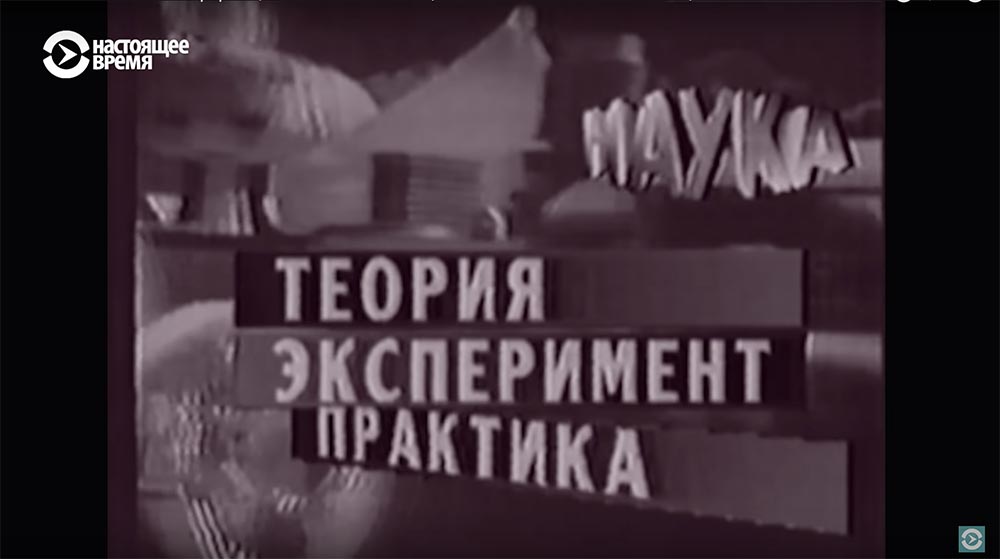
This program for the first time talks about the predecessor of the Internet, international teleconferences held at VNIIPAS. Thanks to the plot author, biochemist Klyosov, you can see how the network looked before the invention of the web.
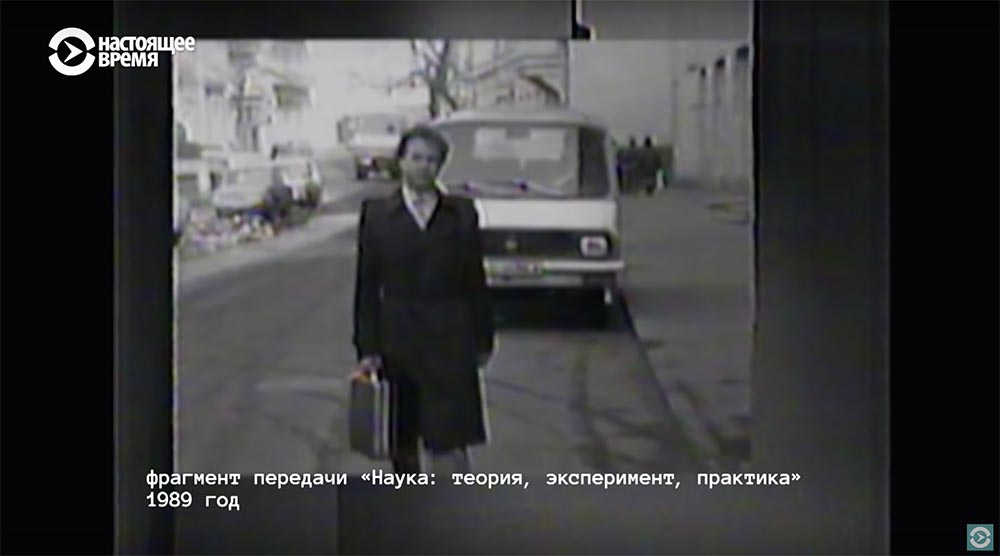
Dmitry Klyosov. Biochemist and pioneer of the Internet.
“Here, in order to connect to a basic foreign computer here, the computer that I use is in Canada, I give a short command and connect to Canada. That's it, the connection happened and the system gives out the so-called menu, informing me that I have received five letters since my last work. These are the first two from Sweden, I already see in stride, one from the USA, then Finland and then New Zealand. And then it reports which conferences I work in, which new messages have accumulated. ”
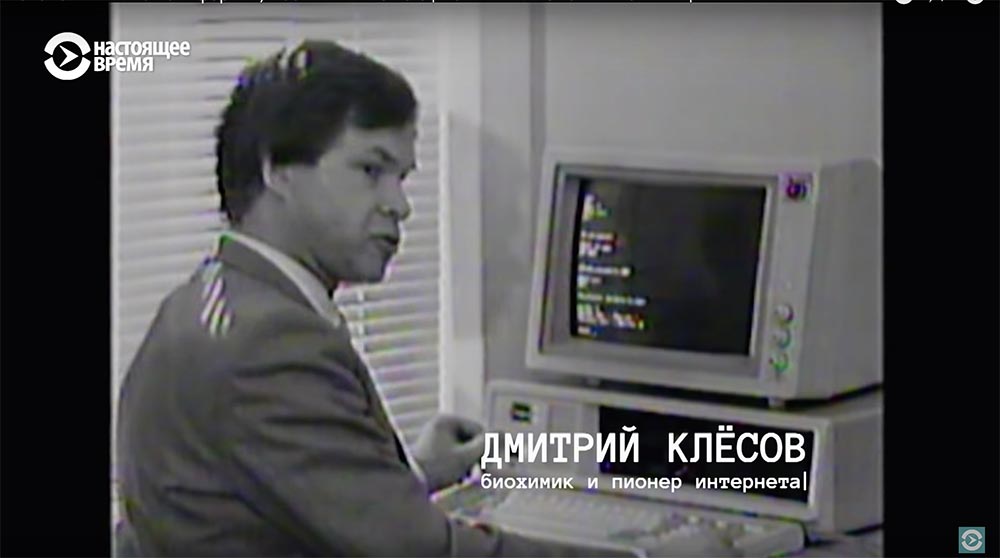
A fragment of the program "Time". 1990 year.
A few days ago in Moscow, they signed an agreement not like any other joint Soviet-American enterprise.

Formally, the new organization is called Owls Teleport.
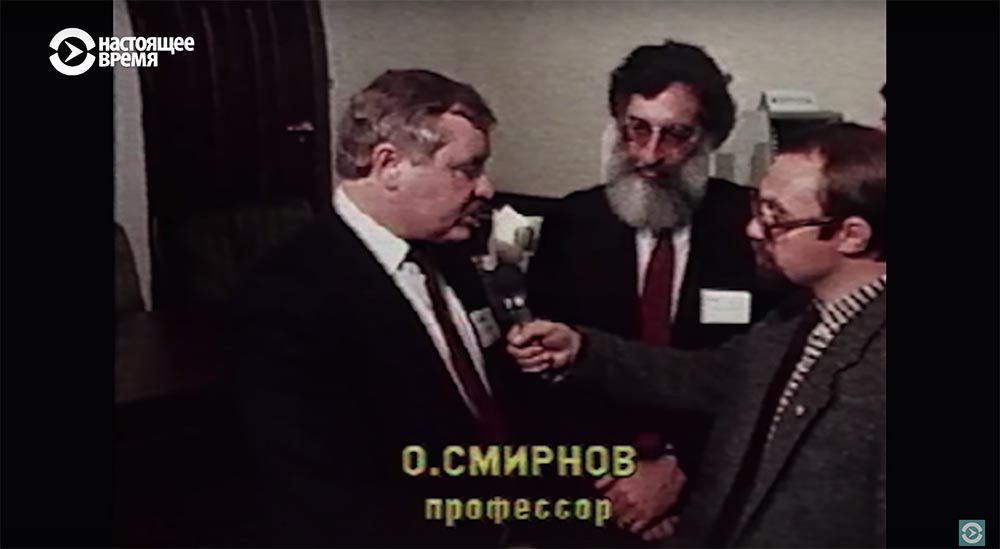
Here is Oleg Smirnov, director of VNIIPAS.

“It will be possible to send a text, table, schedule, letter. Say in San Francisco, New York or Canada. ”

This is Joel Schatz - Director of the San Francisco-Moscow Teleport.
“The creation of a joint venture with our American partners, a joint venture to Owls Teleport, will strengthen this process, which is going on in our country today. "Democratization, transparency and the search for the right and right partners in all areas."

Alexey Kolesnikov. Technical Director of Sovam Teleport 1990-1995
“Did the Union want to be friends with the Americans then?”
“I don’t know, I can’t say that they wanted to be friends, they wanted to become probably a part of a large, civilized world.”
Sovam Teleport became the first Internet provider in the USSR. In a couple of years, Schatz will return to America.
Joel Schatz: Hippy and IT Entrepreneur.
“I never dreamed of devoting my life to building a telecommunication business in Russia, I was more interested in the process of establishing relations in the world in order to avoid a nuclear war. At that moment, it seemed that the relationship was really normalizing, it was a very optimistic time and we decided to return. ”
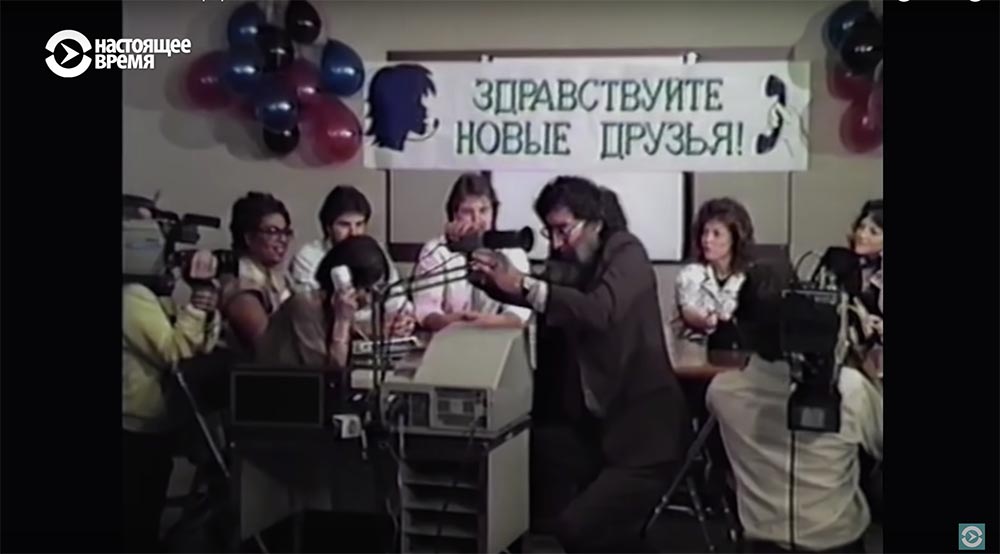
Alexey Kolesnikov. Technical Director of Sovam Teleport 1990-1995
“He was generally a slob, he was kicked out of the US Army, he lived in the forest there with a hippie tribe, experimenting with acid (LSD). The end of the 60s of San Francisco, what to say is understandable ... Apparently he had some kind of vision about how this world should be arranged, and it should be arranged in such a way that people can communicate with each other. Now when I meet with him and talk, I ask, “Well, how do you like it? So everyone communicates with everyone, but they hate each other even more. " He says that apparently this is the essence of man. "
The emergence of the Internet coincided with the collapse of the Soviet system and Schatz and Goldin's dream came true, the curtain collapsed, both in the real world and in the virtual.
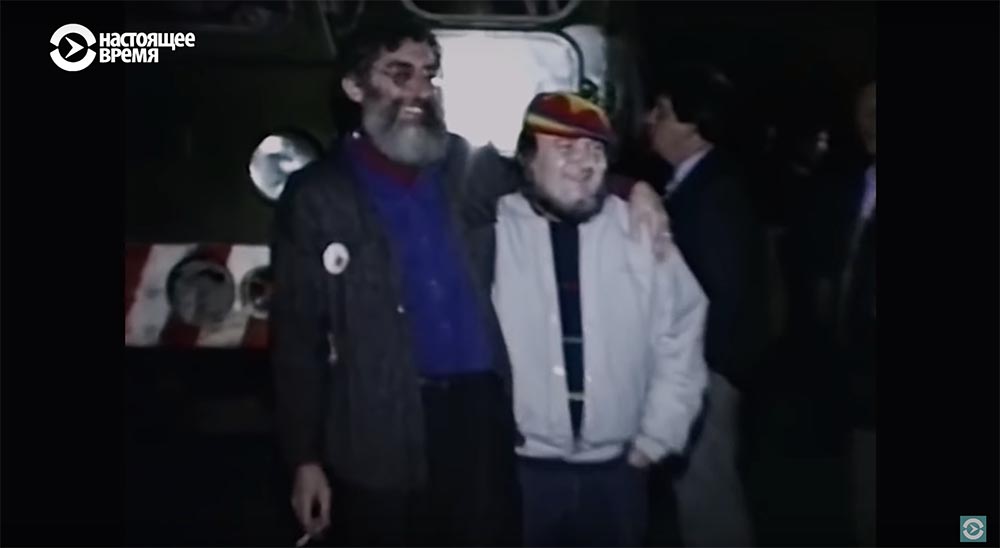
Alexey Kolesnikov. Technical Director of Sovam Teleport 1990-1995
Well, how old was I then, 25 or something, still young then, was hanging out there with Polunin Slava, with artists, with musicians: some kind of Obermaneken, Kino, Boris Grebenshchikov. Well, what else do you want? They were then interested in the open world, which was behind the Iron Curtain. And they were in the office, of course, there were some crazy performances at concerts at the concerts. They took the SS-20 rocket carrier, strategic ballistic missiles, planted Polunin with clowns on it and took them to Red Square.
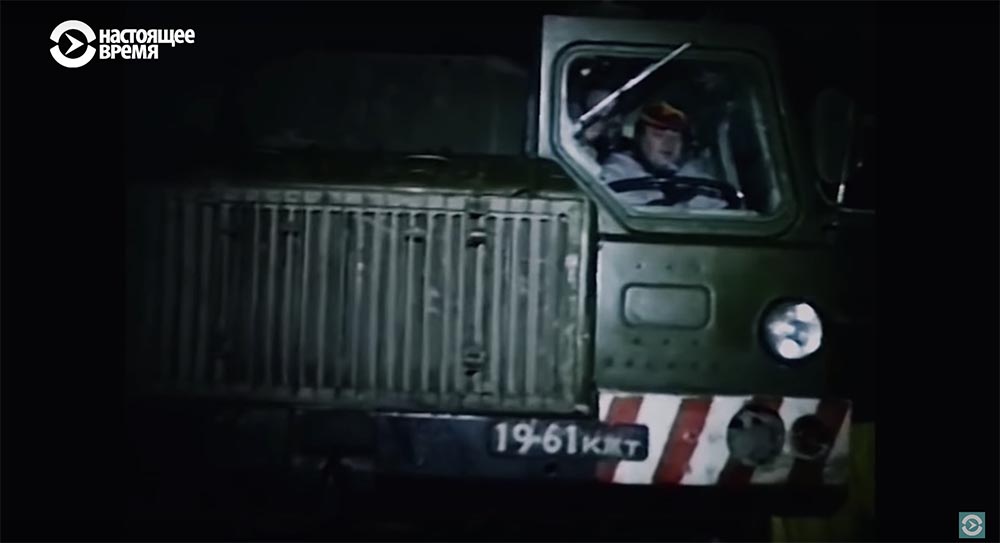
Joel Schatz: Hippy and IT Entrepreneur.
“We did not have official permission, but the traffic police did not stop us because Joseph managed to convince them that the action was agreed at the top. And that was the whole mind. ”

Alexey Kolesnikov. Technical Director of Sovam Teleport 1990-1995
"We are all so young, thin, here is my beautiful face with a tail, well, Internet guy, what is there."
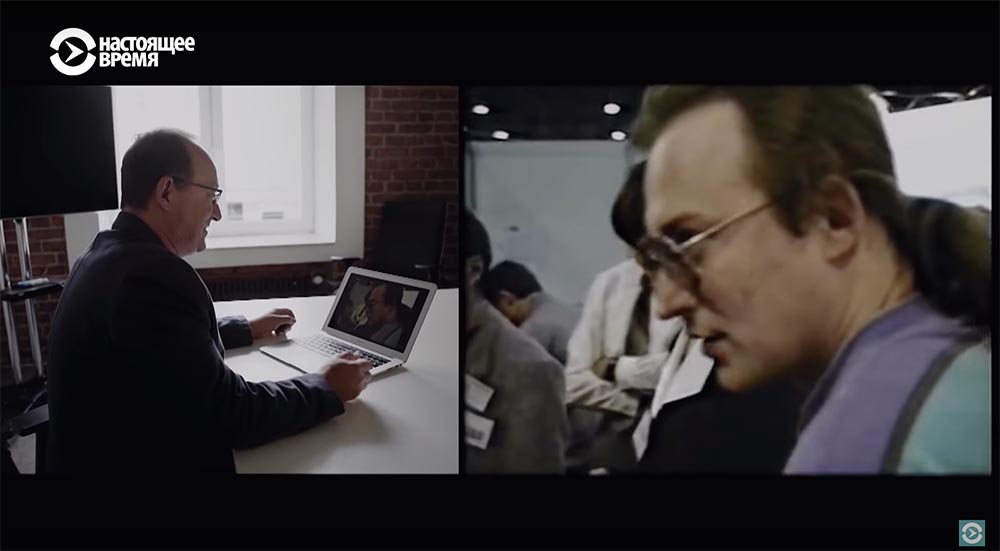
Owls Teleport was renamed Online Russia, then sold to Golden Telecom, which in turn absorbed Beeline for a record $ 4 billion. The enterprising hippie Schatz woke up a wealthy man.
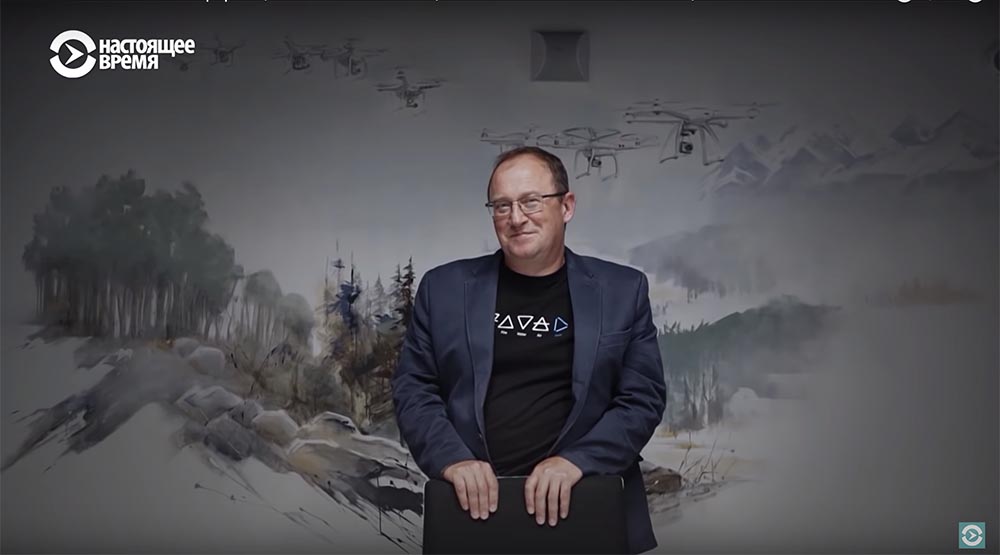
Joel Schatz: Hippy and IT Entrepreneur.
“We got rich and it was a shock for us, because it was not the desire to make money that brought us to the Soviet Union, but the desire to bring benefits, to bring Russians and Americans closer together, so that the world becomes more secure.”
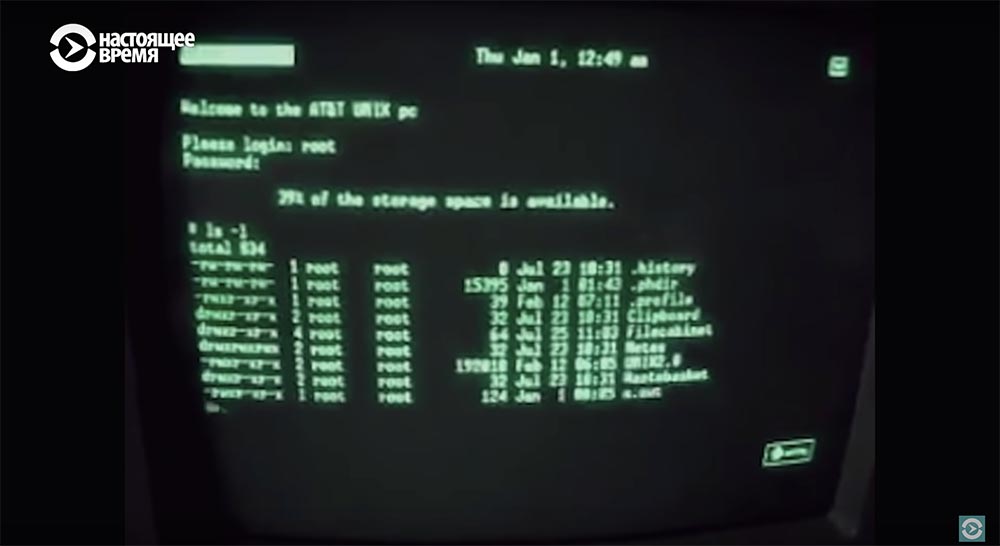
In the RuNet pedigree, of course, not only California hippies. After the invasion of Afghanistan, the Soviet Union came under sanctions. Under these conditions, the team of programmers managed to Russify the secretly exported American Unix operating system.
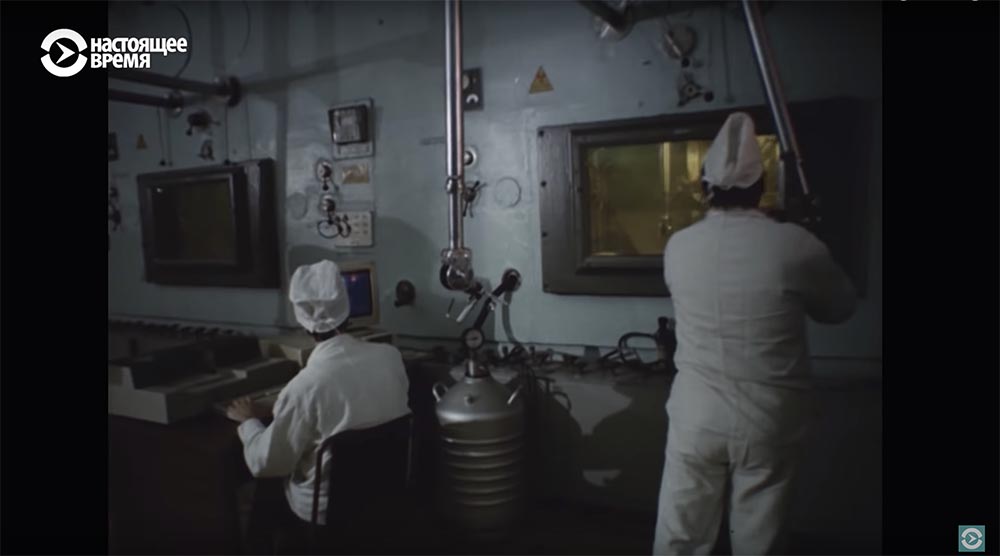
And build a network on its basis. Many Unixoids worked at the computer center at the Kurchatov Institute.
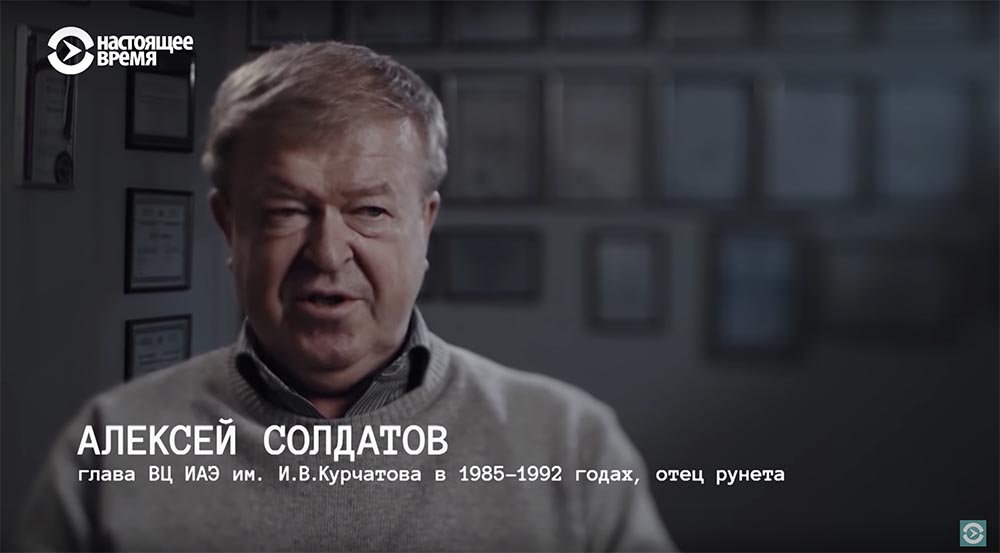
Alexey Soldatov. Head of the Exhibition Center of the IAE I.V. Kurchatov in 1985-1992, the father of Runet.
This is a network that united scientists, and most importantly, the network is flat. People communicate on the same level. Before that, if you want to get the results of another institute from this institute, you need your selector to contact that selector, and he will give instructions ... And then there was a horizontal connection, each and every one went through this intensive exchange. Articles, experiment results, and so on. "
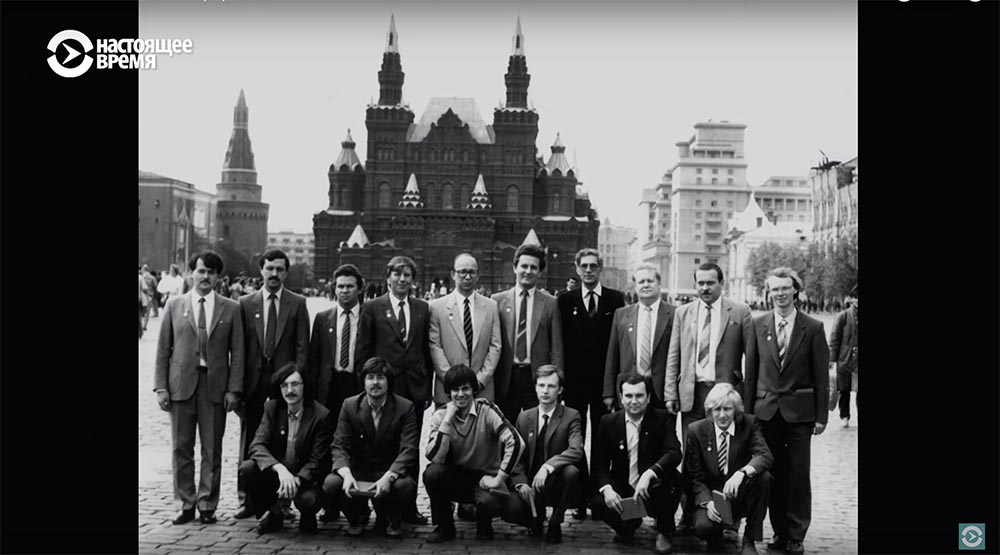
In this photo, Soviet programmers who received the Council of Ministers award for creating the DEMOS (Interactive Unified Mobile Operating System) operating system, the domestic version of unix, young scientists were able to adapt advanced software to backward Soviet computers. The state did not punish the initiative, but encouraged.
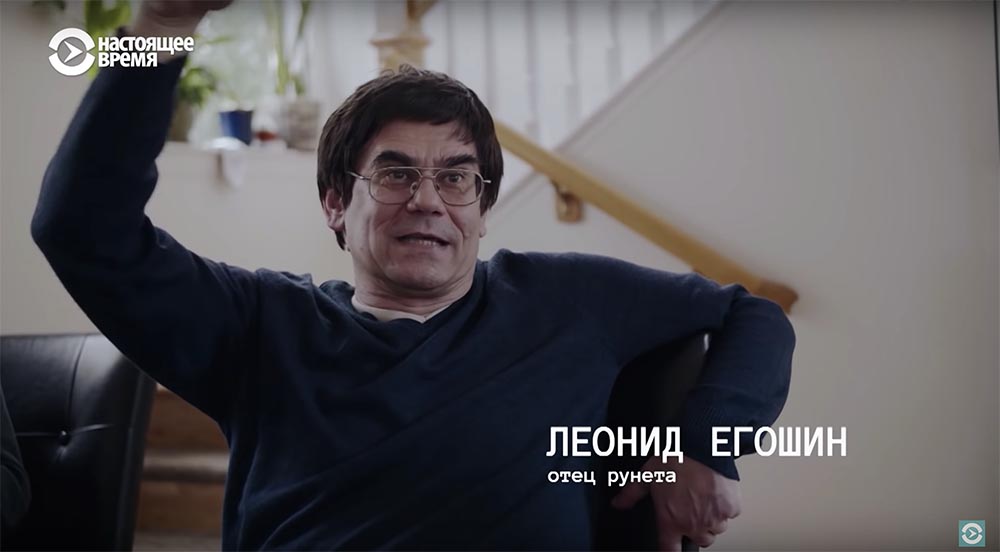
Leonid Egoshin. Father Runet.
Awarded a prize, issued a medal, issued a diploma and 480 rubles each. We were handed over to us in the Kremlin in the hall under the dome, which can be seen from Red Square, right behind Lenin's Mausoleum. Do you know? Over there! And then we went out and photographed us and we got a famous photograph.

In the California house of Natalia Paremsky, the widows of programmer Mikhail Paremsky, they celebrate Shrovetide. Gathered old unixoid friends.

Natalia Paremskaya. Senior programmer.
“That was so. Paremsky dragged these tapes from Unix on his stomach, from somewhere he put them down. He dragged through the gate, through the Kurchatov Institute and then the people became interested. This was not the task of the party, the government, there was nothing like that. These were enthusiastic people. We were all friends. All of this was very wonderful, you know how PCB is some kind of movement. You know, it was like that from the heart. ”

KSP - amateur song club. A synonym for the movement of lovers of bard songs.
The Soviet Union has always encouraged defense science. Not surprisingly, the first to connect to the network were scientific centers related to nuclear physics. IHEP (Institute for High Energy Physics) was aimed at collaborating with CERN (European Center for Nuclear Research) and partly with America.
Leonid Egoshin. Father Runet.
“Because many laboratories of IHEP made equipment for joint experiments, communication was very necessary. The opportunity to connect then was through the director’s only Moscow telephone line. They put a modem on this line and I provided an email station using Unix and a Soviet computer. It was a breakthrough. ”
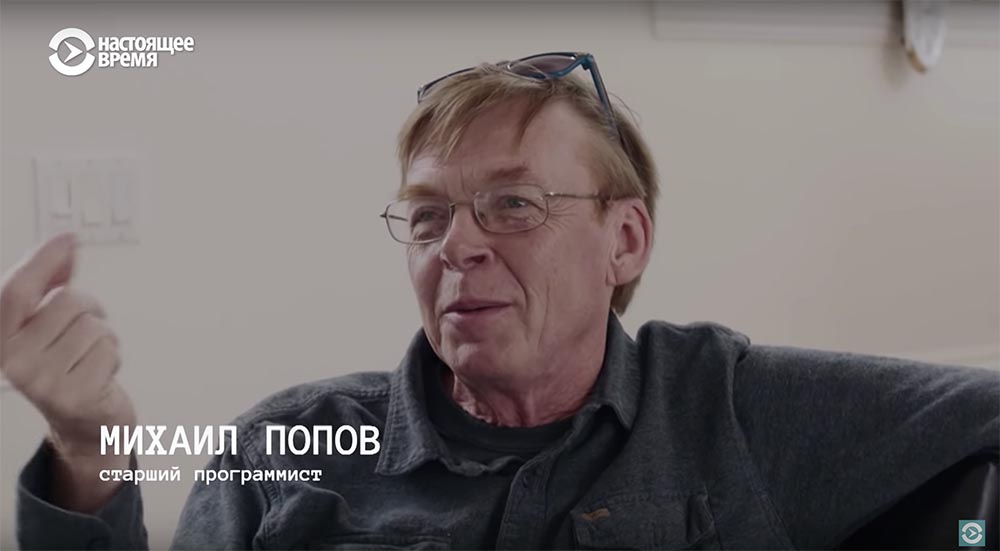
Mikhail Popov. Senior programmer.
“For an hour, we could chat with ten people from around the world and get an answer. This is like a thing that completely changed everything. No control! The feeling of completely new opportunities. ”
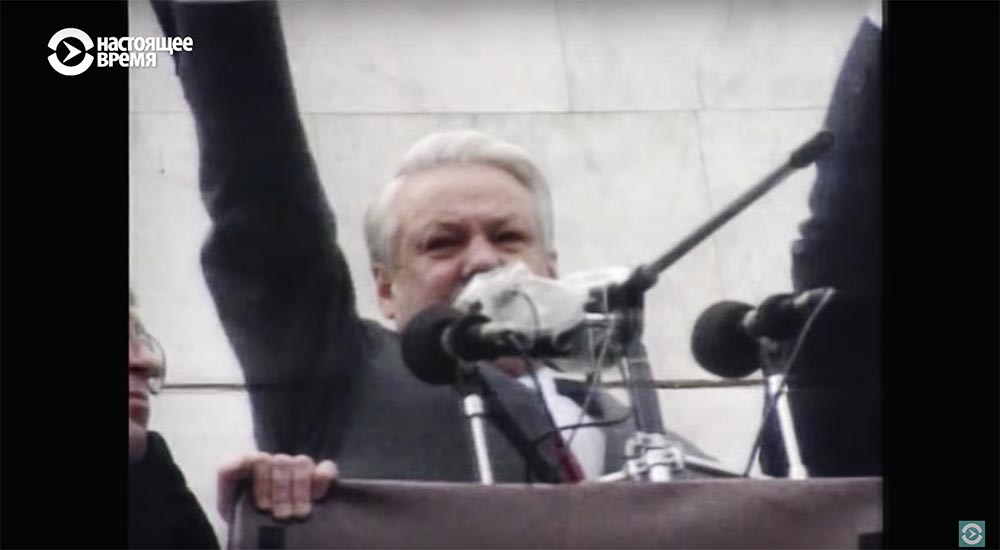
In 1991, there was a putsch, while Swan Lake was broadcast on television, providers told the world about what was happening in the country. Even then it turned out that the Internet could be an alternative source of information.
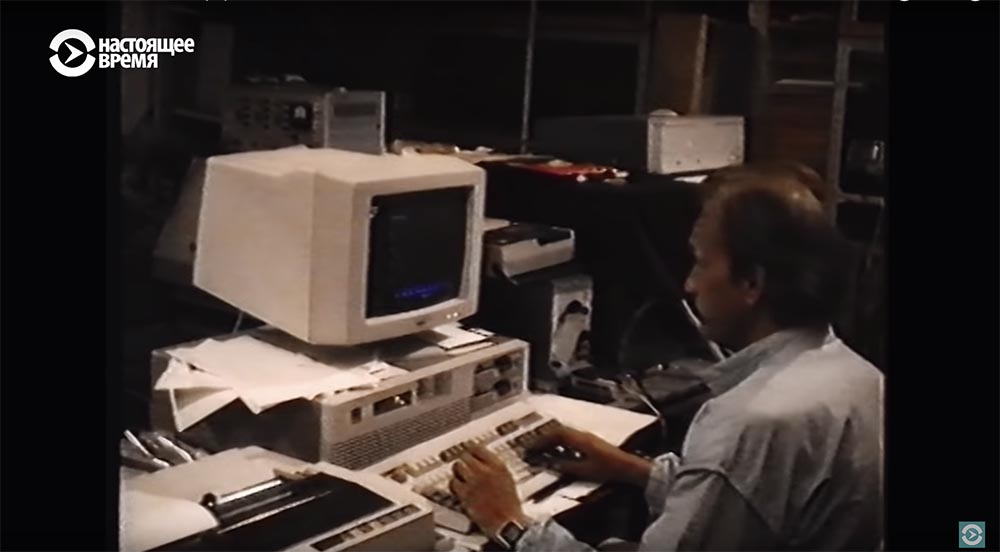
Alexey Soldatov. Head of the Exhibition Center of the IAE I.V. Kurchatov in 1985-1992, the father of Runet
They arranged a unit at the Kurchatov Institute, a spare one in Demos. Exchange information. There was information of this type: "I’m sitting on such and such a floor, tanks go to such and such an address." After that, Yeltsin’s appeal was announced and we instantly transmitted, well, as we, I phoned my comrades and implored them not to go to barricades, but to do my main business, because this is much more important. "

Once a week, programmer Alexei Rudnev tries to fly over the San Francisco Bay, “air his head,” as he says. The legendary Unixoid, one of the winners of the Council of Ministers Prize, Rudnev left Russia almost 20 years ago, like many from that memorable photo.
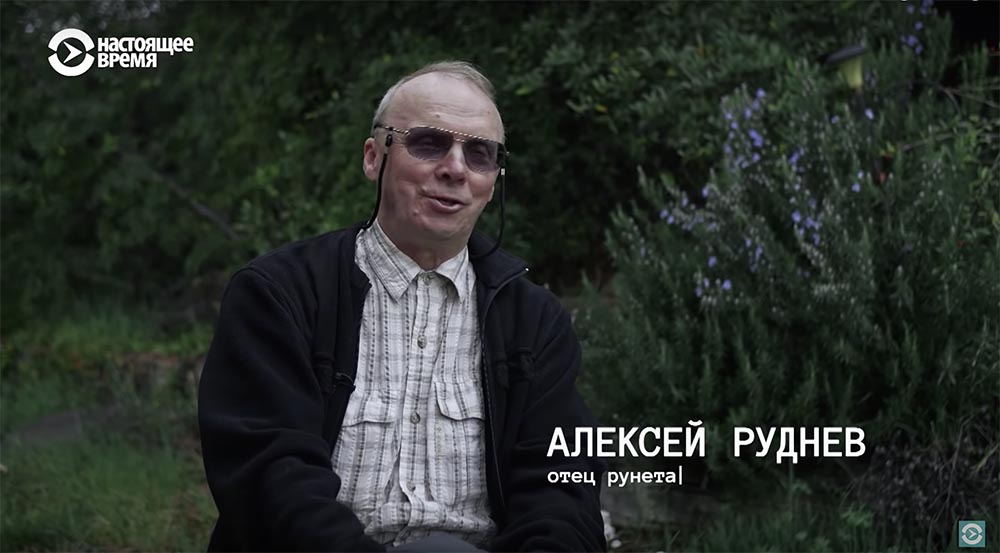
Alexey Rudnev. Father Runet.
“The first people who were leaders were the former Ministry of Taxes and Duties, who were very honest and very illiterate in business. By the end of the 90s, businessmen had already arrived, there was more business, less technology, that is, it was not interesting, people began to look for a new job, now our number is in the states, well, in my opinion 60/40 happened somewhere. It turned out a little more here, but again it’s all very arbitrary. ”
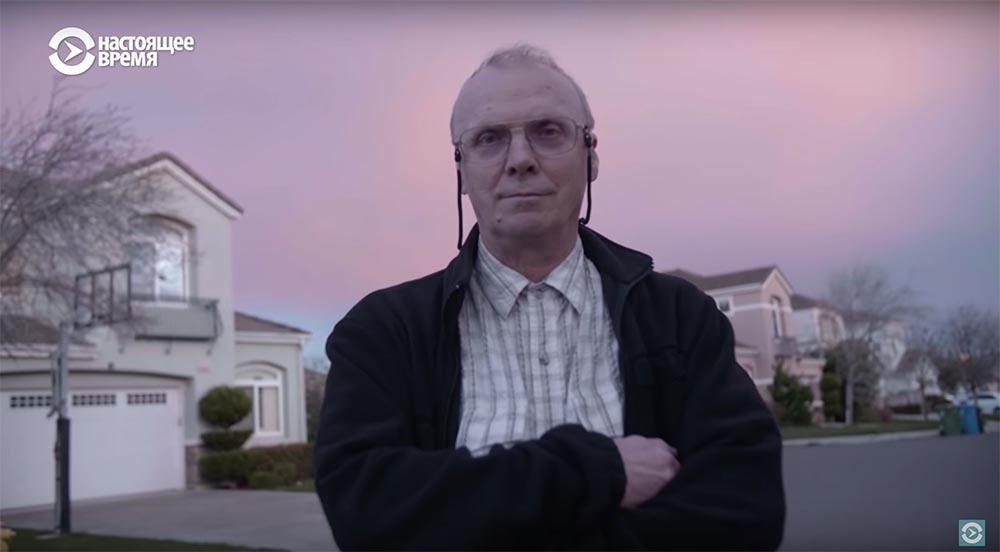
Gathered together, the fathers of Runet often recall their homeland, where their skills were not needed.
Leonid Egoshin. Father Runet.
“It was the nineties. Then there was wild capitalism, the developers were on the side. It turned out that they are not the main problem, the problem is where to get money, buy a channel, persuade, rent a room. ”
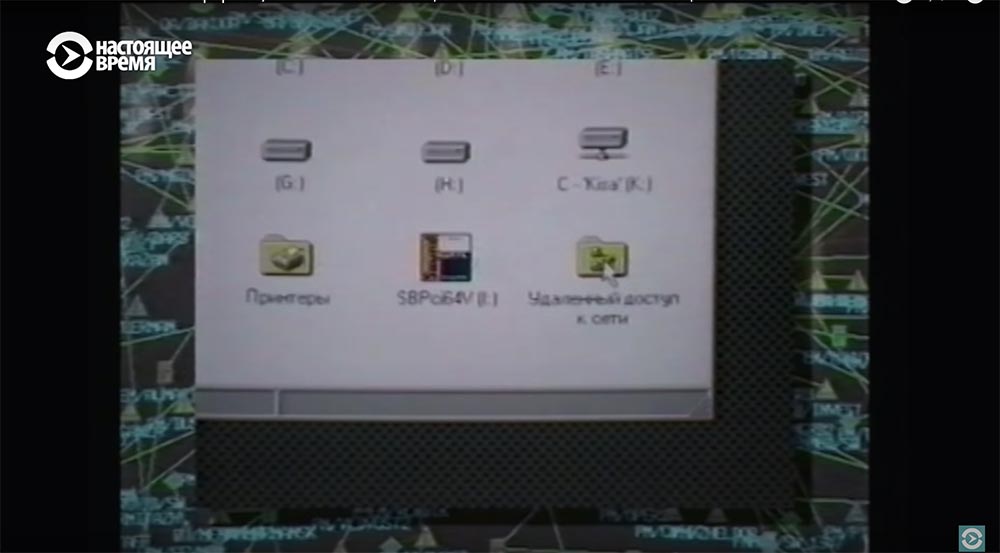
Alexey Rudnev. Father Runet.
“That is, at the first stage, the developers were the main ones, at the second stage the businessmen became the main ones, and now it’s normal.”

Leonid Egoshin. Father Runet.
“And the whole scheme began to move somewhere else, it became clear that the technical specialists would not be needed for a long time.”
Alexey Rudnev. Father Runet.
“Well, not a fact either. They will not be the main ones. ”
And many left.
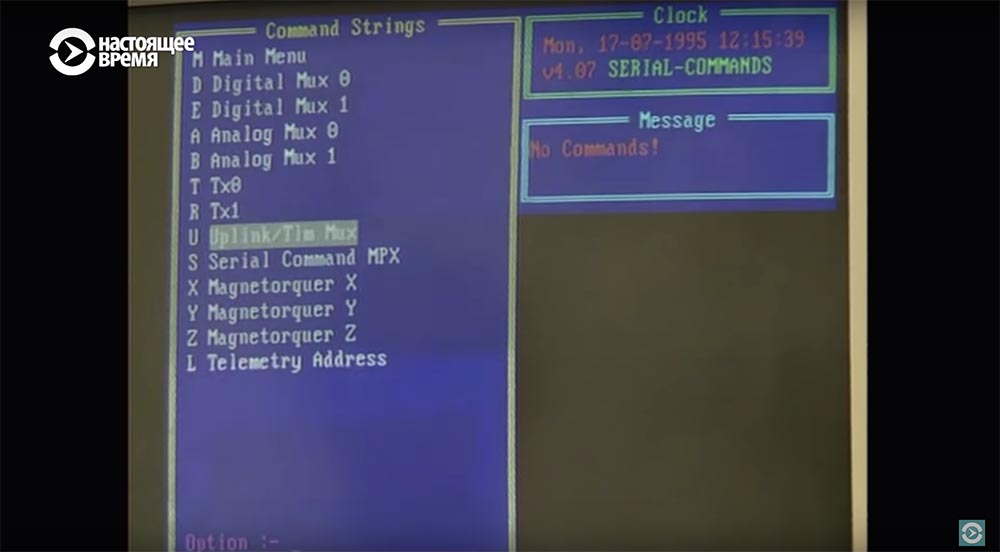
Leonid Egoshin. Father Runet.
“Yes, my reason why, in general, we left, was this. That is, it was clear that they would not be needed for a long time. ”
Have you always appreciated developers in the USA?
Leonid Egoshin. Father Runet.
"What are you, of course."
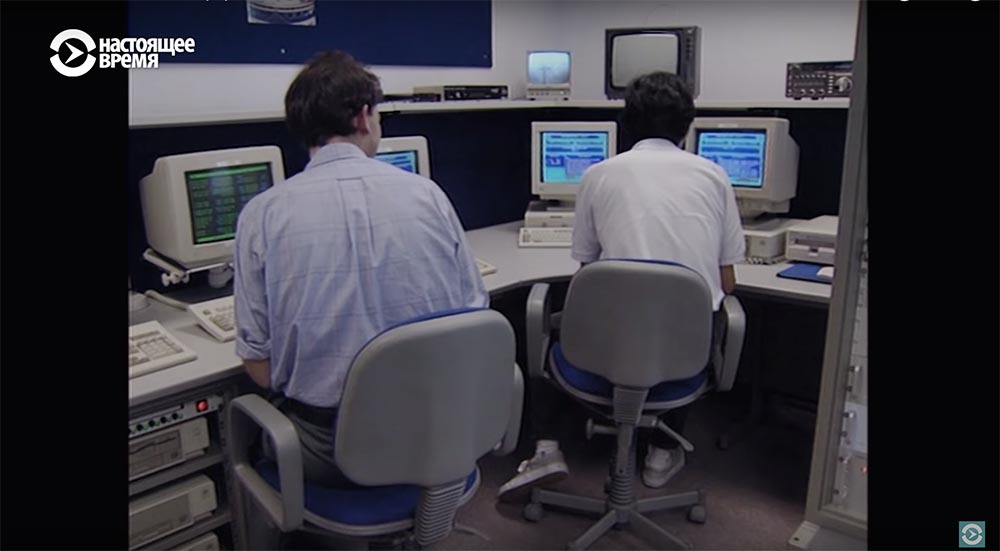
Most of the Russian-speaking users in the early 90s are scientists and graduate students of Western universities and research centers. The IQ level in RuNet was appropriate.

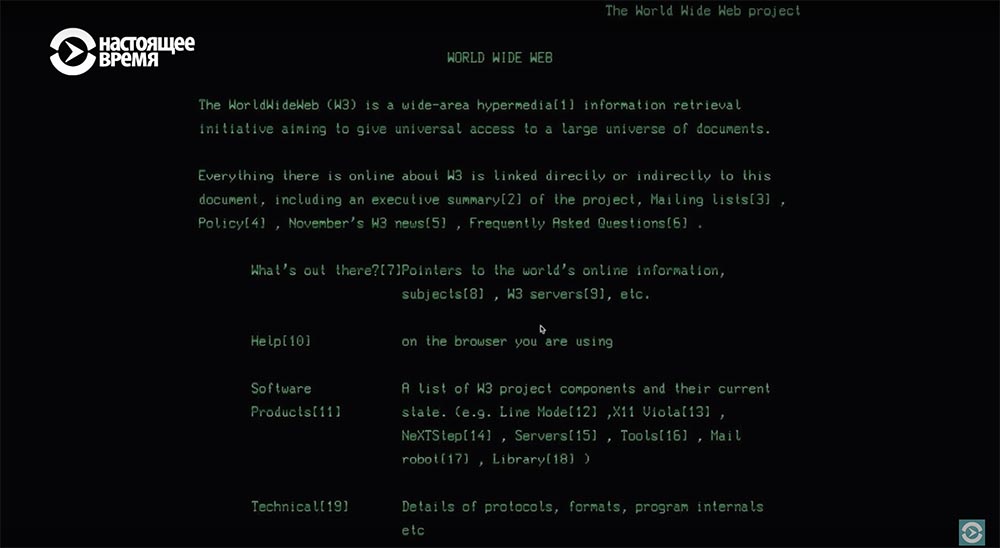
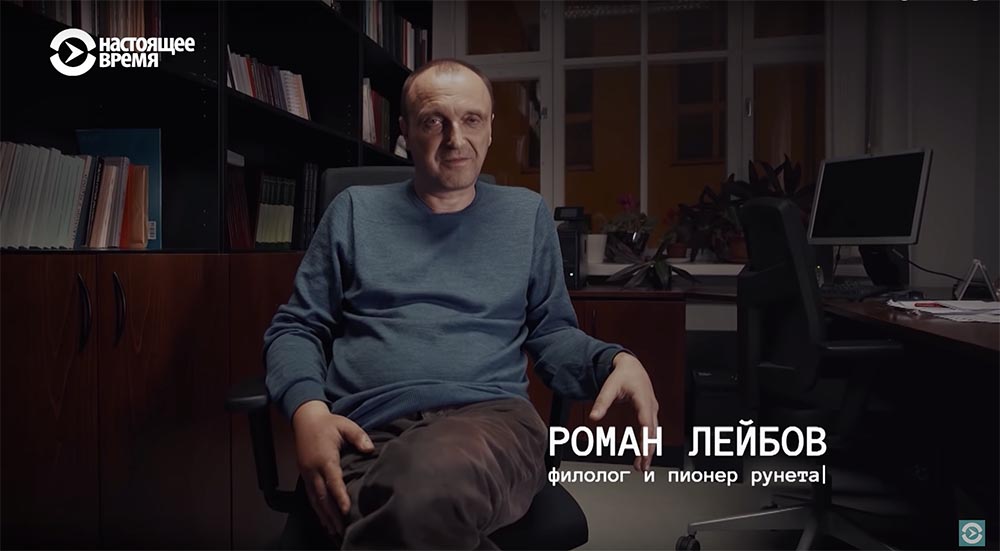
Roman Leibov. Philologist and pioneer of Runet.
The beginning that I found - it really was like that. The time of some American blunders. Naturally, they were Russian-speaking for me, but at the same time they were absolutely inscribed in the local system. I thought that if you came to the Internet, then how can you not understand in English.

Alexey Andreev. Writer and pioneer of Runet in 1994 - 1996, a graduate student at the University of West Virginia.
There still of course was a certain intellectual qualification. That is, people who were in universities first came there. Or at least in some kind of IT companies, that is, there were no repeats in a sense. People were certainly strange and crazy, but they were not commonplace. They were all kind of interesting.
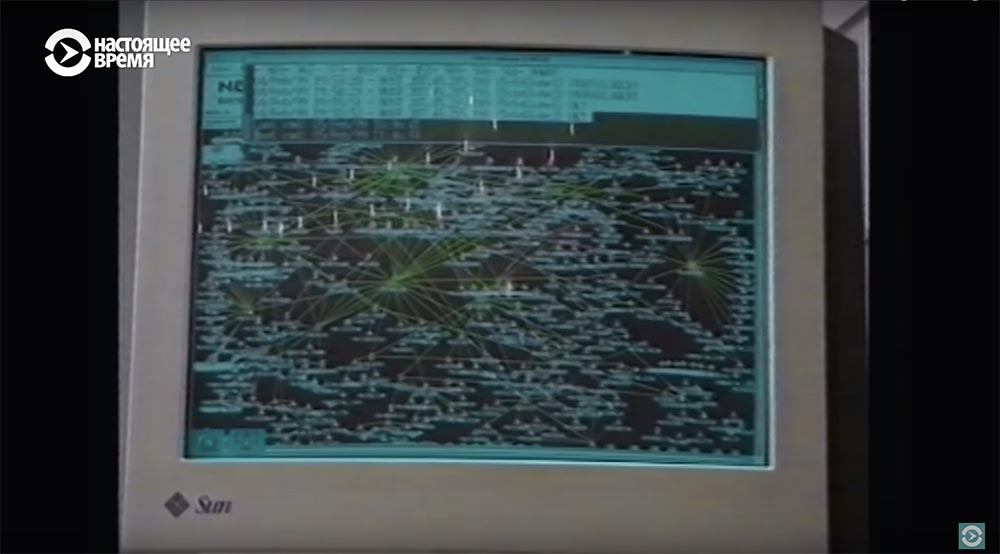
In 1993, the web appeared, the World Wide Web, browsers made the Internet accessible not only to scientists.
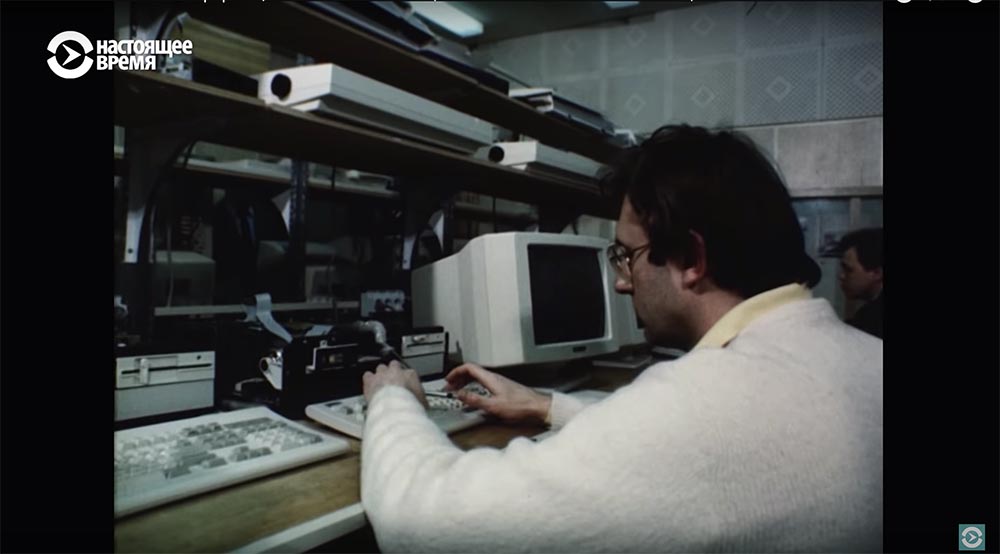

Maxim Moshkov. Creator of the Moshkov Library resource.
“Closer to 1994, another channel was dragged into the mathematics department. Already such a permanent real Internet. And we begin to do www, like all white people. We do not know what it is. We know that we need to draw a page, arrange it in a special way. We go to the Cernovo server, almost the first www-server in the world, there the homepage of the inventor of this language http is central, there you know how it happens “About me”, “About me”. We download it and it says such-and-such, the inventor of the mosaic (Mosaic is the first web browser with a garfic interface), http, it works there, then, “I have such and such a hobby”, “here is my photo “. All together the employees take this page, throw out the name of this dude, write themselves, replace the photo with their own, and each now has a personal page. In fact, this transfer, copy-paste, we don’t know anything, but we’ll copy everything, it just happened like that. ”


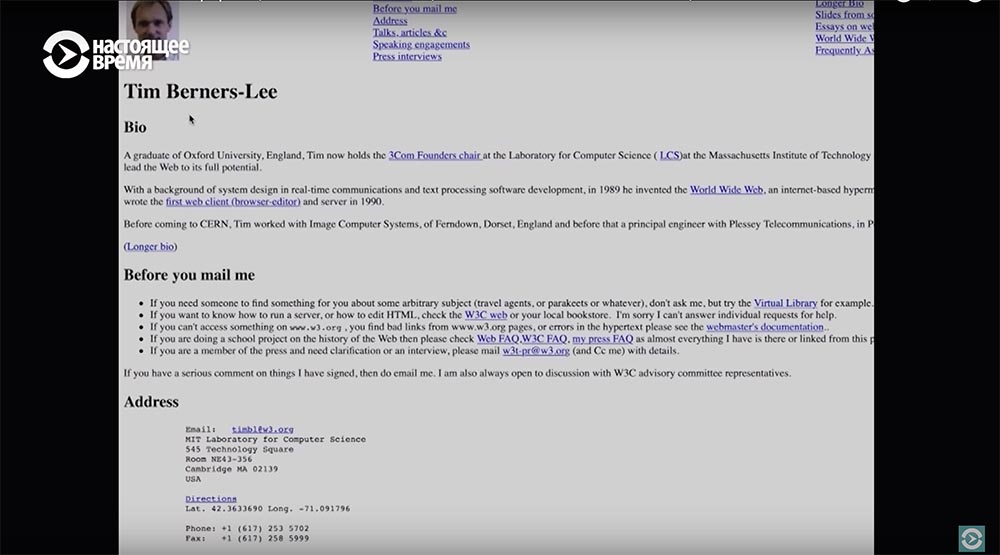


Dmitry Werner. The creator of the site anekdot.ru in 1994-1998 was a visiting professor at the University of Kentucky.
“In 1994, I found a website in the states, it was called Dazhdbog’s grandchildren, Dazhdbog’s Grandsons, it was done by Sergey Naumov, a graduate student of one of the American universities and there were instructions on how to Russify a computer, I Russified Unix workstation, it was a complete delight. After four years of living abroad, I suddenly saw Russian words on a computer. Russian Internet was very small then. ”
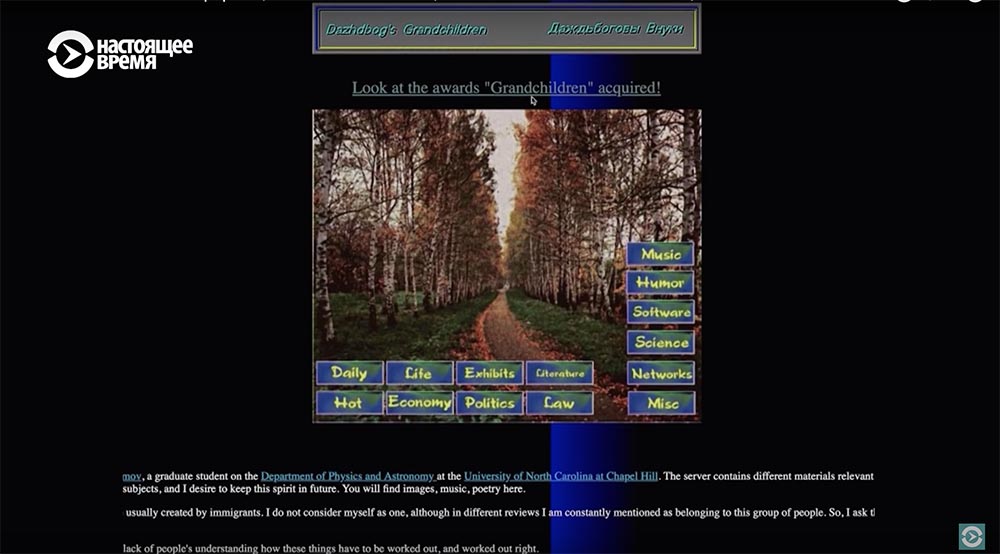
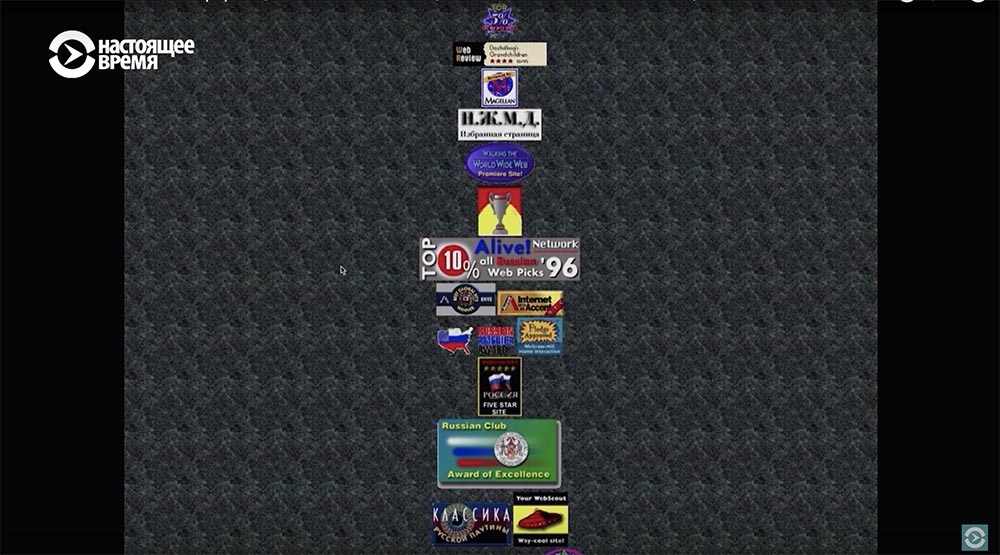
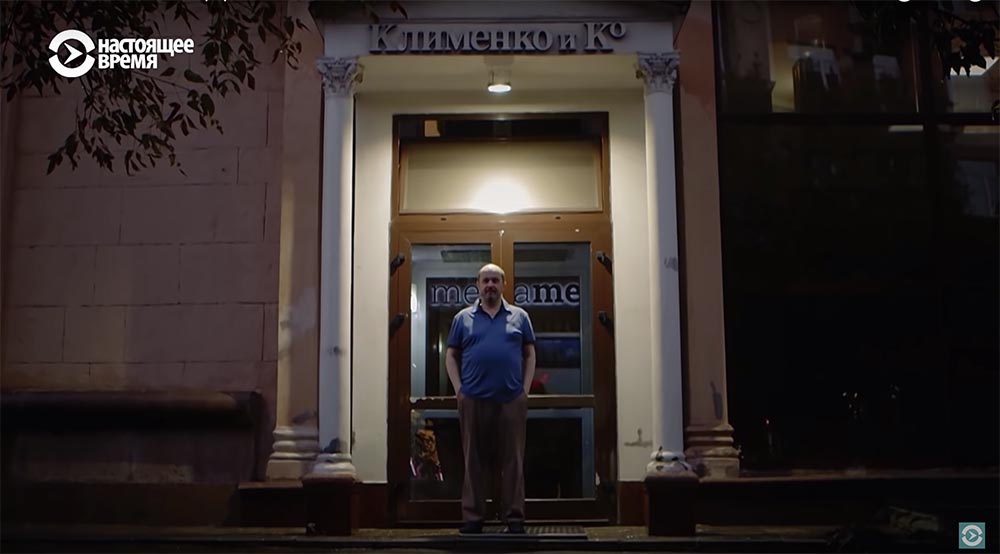
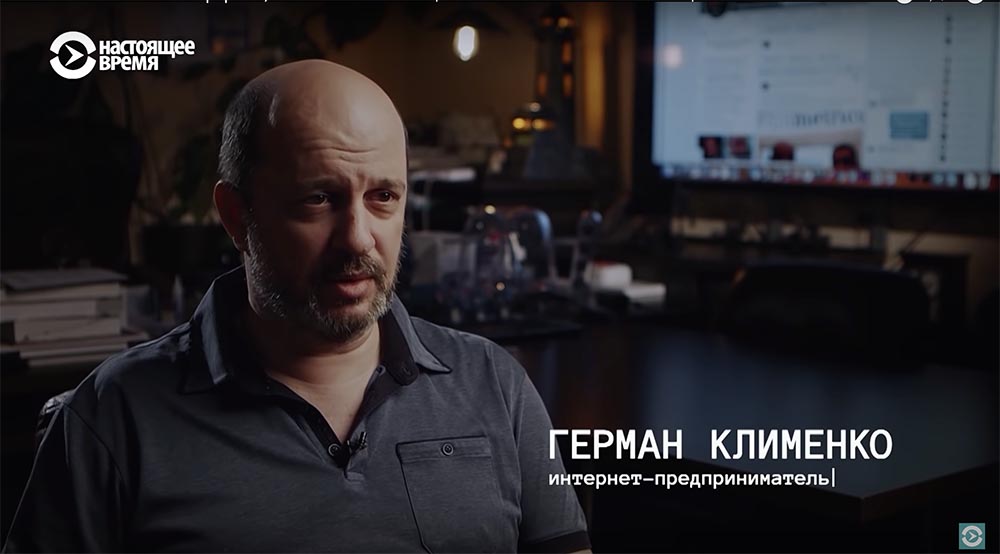
German Klimenko. Internet entrepreneur.
“We carefully hide how it all began, then there was the term“ two girls per hour ”, that is, when it was fido, there were 1200 bit modems, and now you sat and at your place two pictures of girls of erotic content passed. That is, nothing can be done - it was. They loaded very slowly, because there was the term “two girls per hour,” I'm sorry. ”

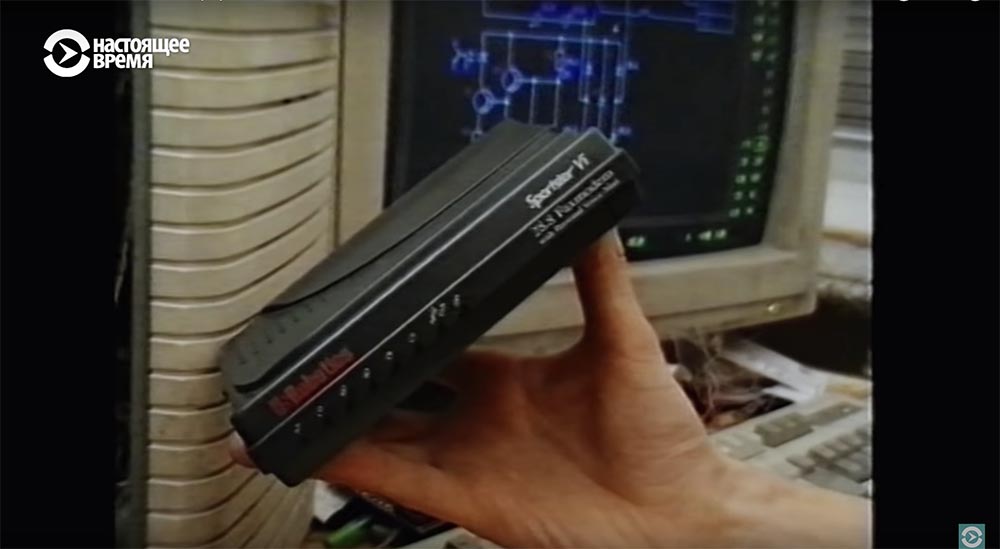
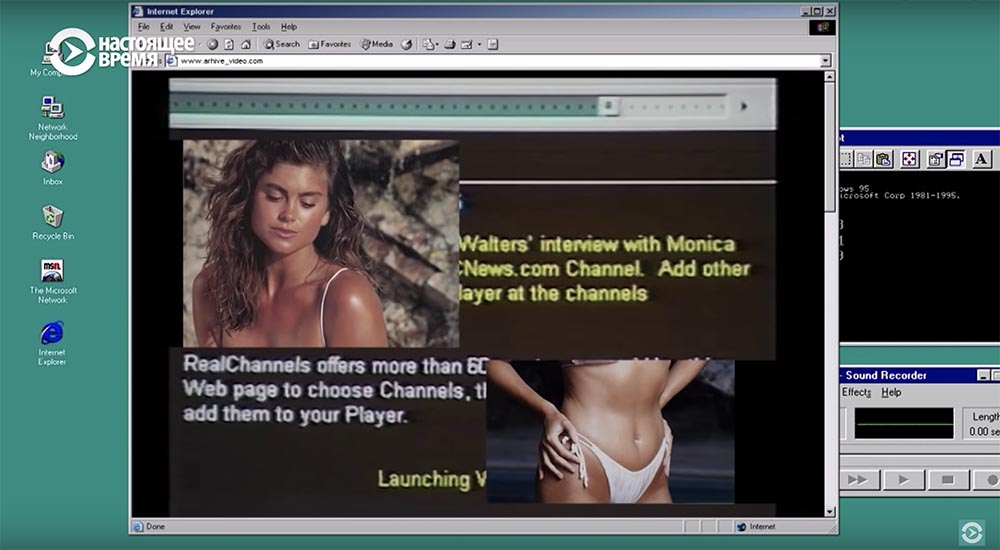
Artemy Lebedev Studio celebrates 23 years. Now it is almost 300 employees and thousands of completed projects. When the web appeared, the designer of all Russia was not yet twenty. He lived with his parents in the USA and was fond of computer graphics.
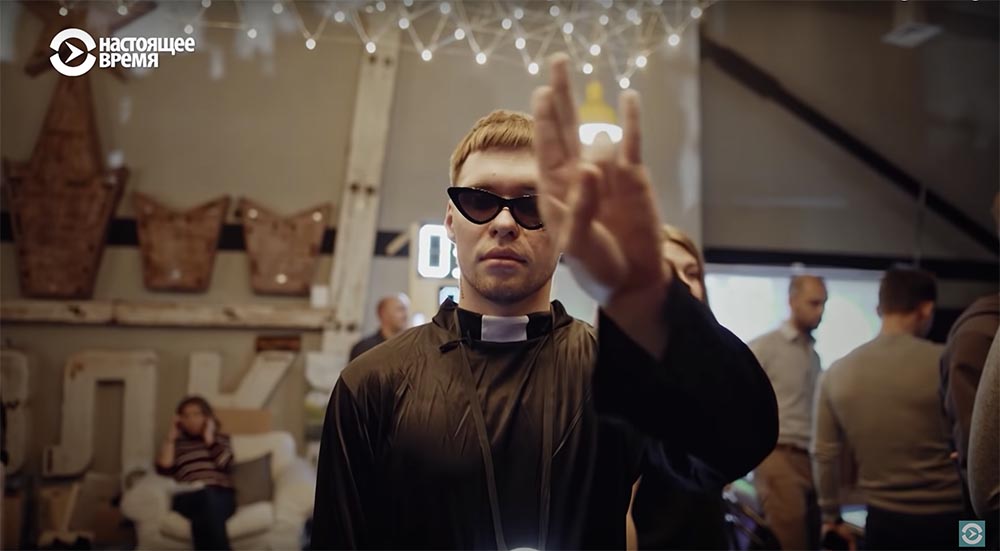


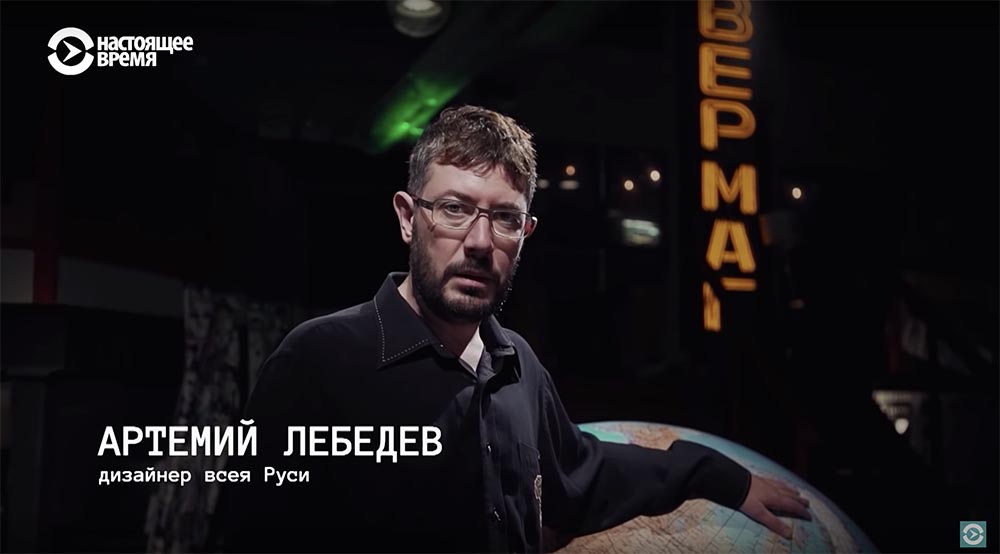
Artemy Lebedev. Designer of all Russia.
“I came here and turned out to be the first person who began to draw websites for money to people and so on. Among my first customers, 1996-1997, were Hewlett-Packard, the Central Bank of Russia, I made the first website of the State Duma. That is, I was sitting at home in my kitchen, they came and ordered, because there was no one else to go to. I worked for days and did one thing that then 5 people began to do in one day, then I had a working day of 36 hours. I closed the curtains, I had two two-liter bottles of cola and pizza with cigarettes and only worked on this fuel. "

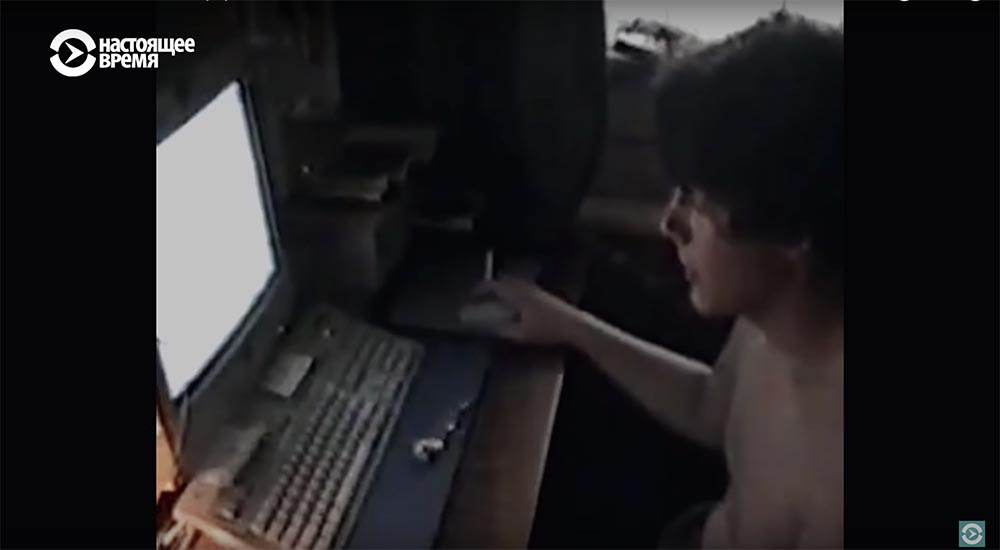

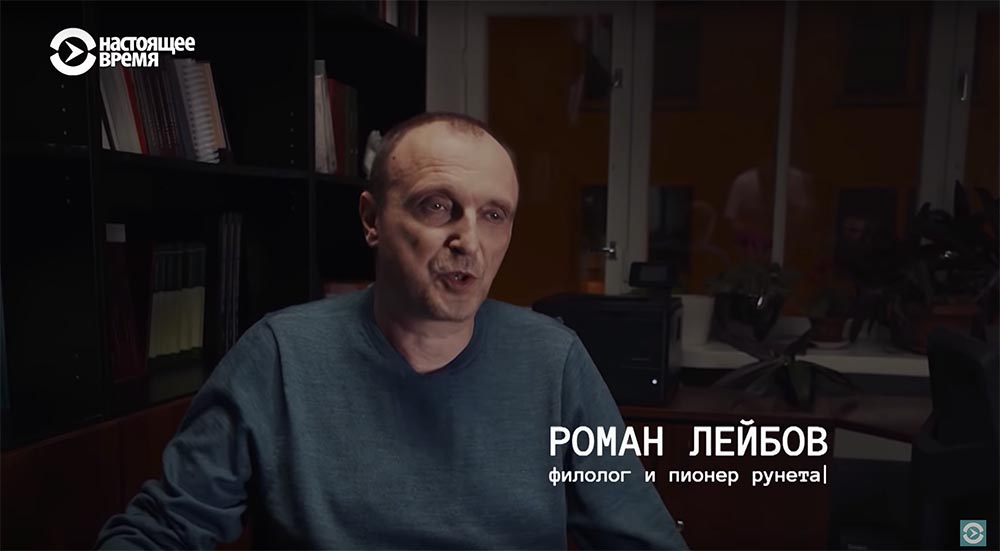
Roman Leibov. Pioneer Runet.
“Look, now we see Lotman. Moving we continue to see Lotman. "
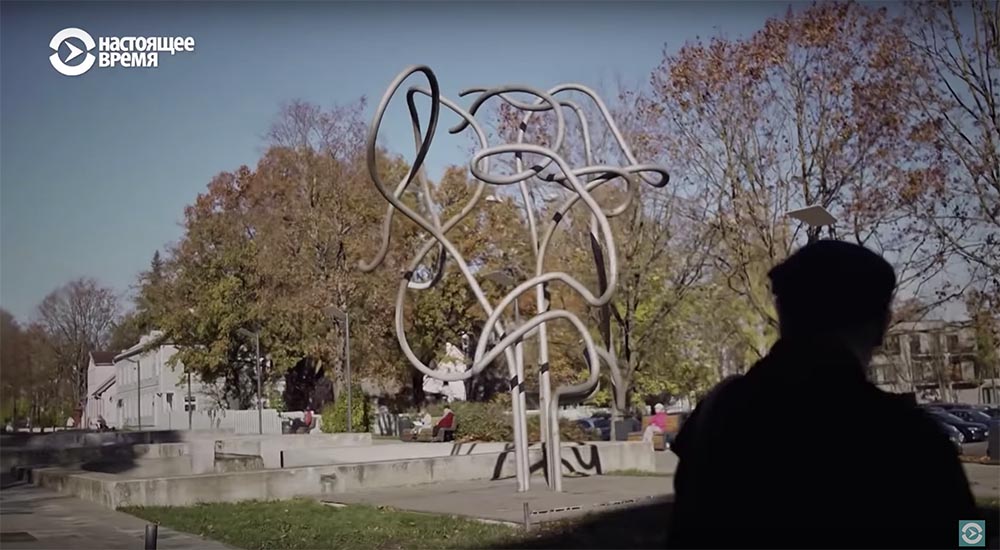
"And here Lotman begins to decay and turn into Cthulhu or something like that."
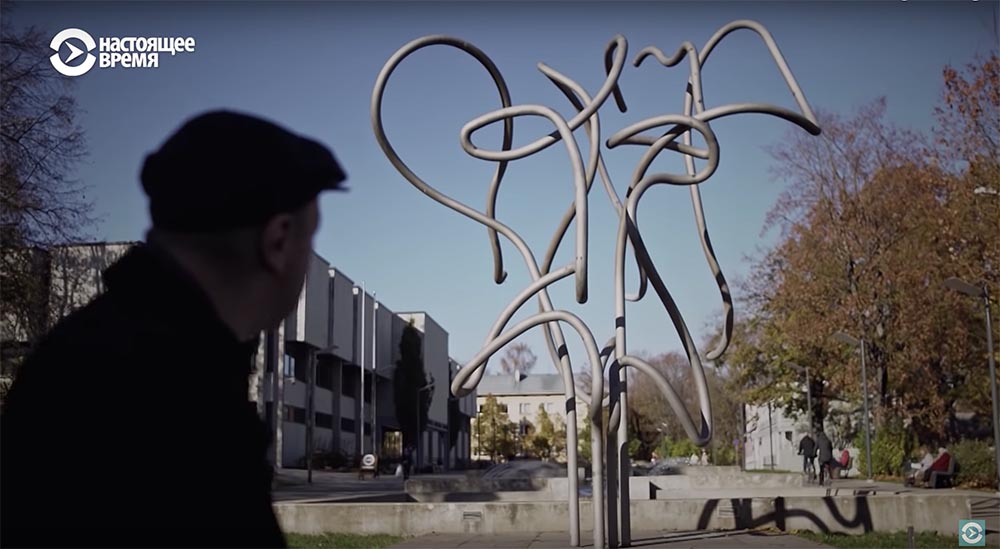
So far, the quality of communication allowed downloading 2 girls per hour. The Internet was about text, not about pictures. It is symbolic that several pioneers of Runet were students of the great Lotman at the University of Tartu.

Roman Leibov. Pioneer Runet.
“Lotman invented the semiosphere, the idea of the semiosphere is that a person is surrounded by signs that they themselves produce. When the Internet came, we saw what the semiosphere is. ”
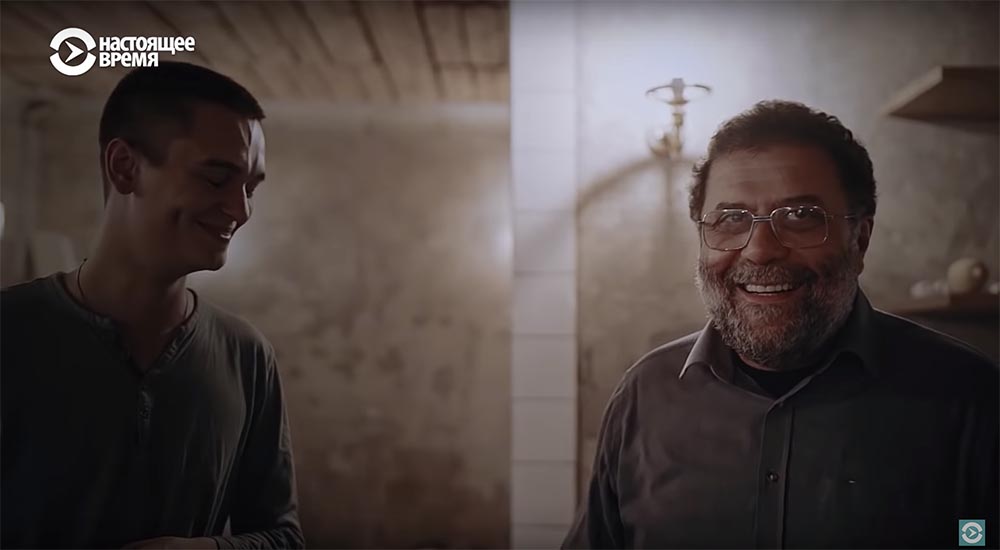
Another student of Lotman Dmitry Itskovich is the owner of popular drinking establishments today. In the mid-90s, in his apartment in Kalashny Lane, the editors of the first online publications with the simple names zhurnal.ru and polit.ru were located, this was the place where the Russian humanitarian Internet was forged.

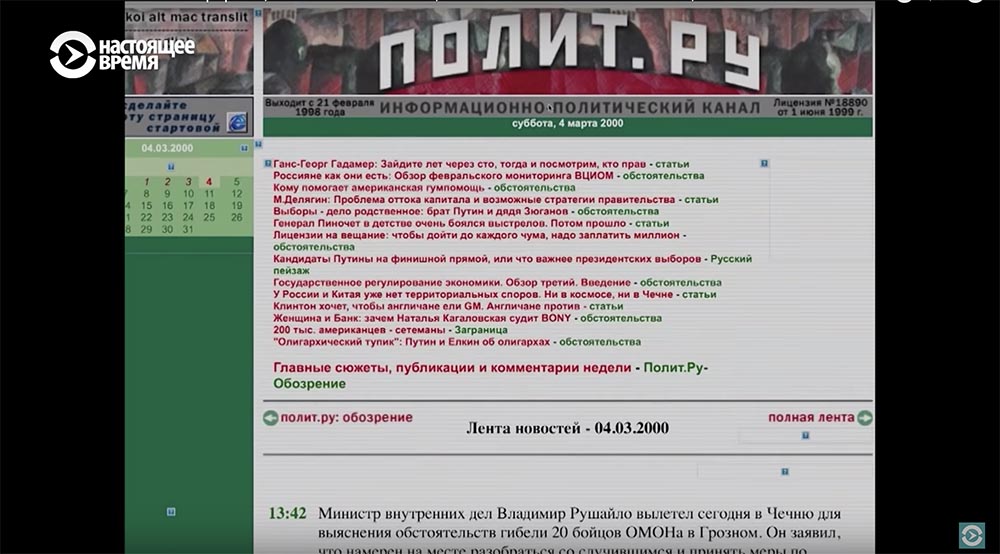
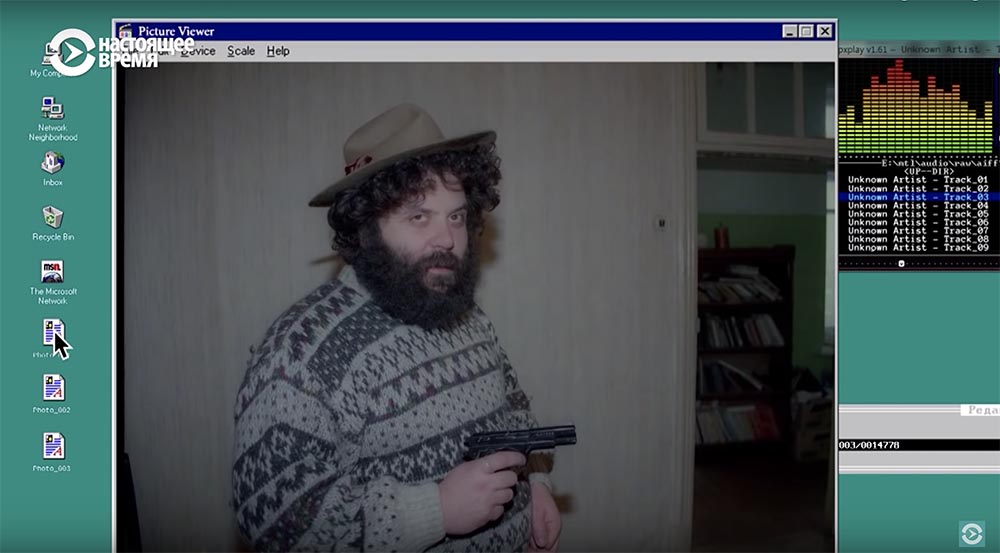
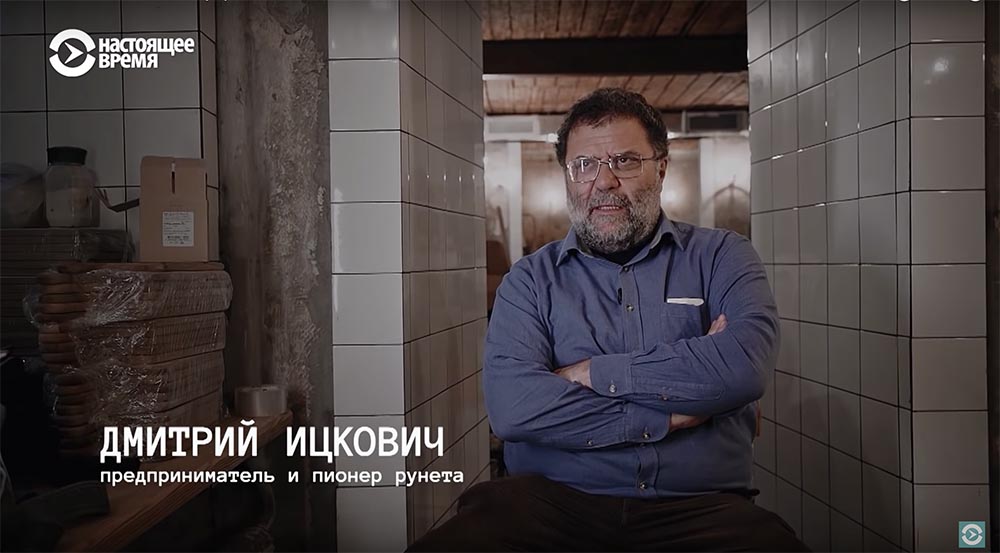
Dmitry Itskovich. Entrepreneur and pioneer of Runet.
“They gave us a modem and we had almost the first ethernet in Moskvka right into the“ golden brains ”. From the window of my apartment a direct beam hit the Academy of Sciences, the Internet came to us through it, and I just had 5 computers in my room and someone was constantly doing something on them. We were the first to make IRC conferences with Prigov, with Auktsyon, with Pelevin. ”
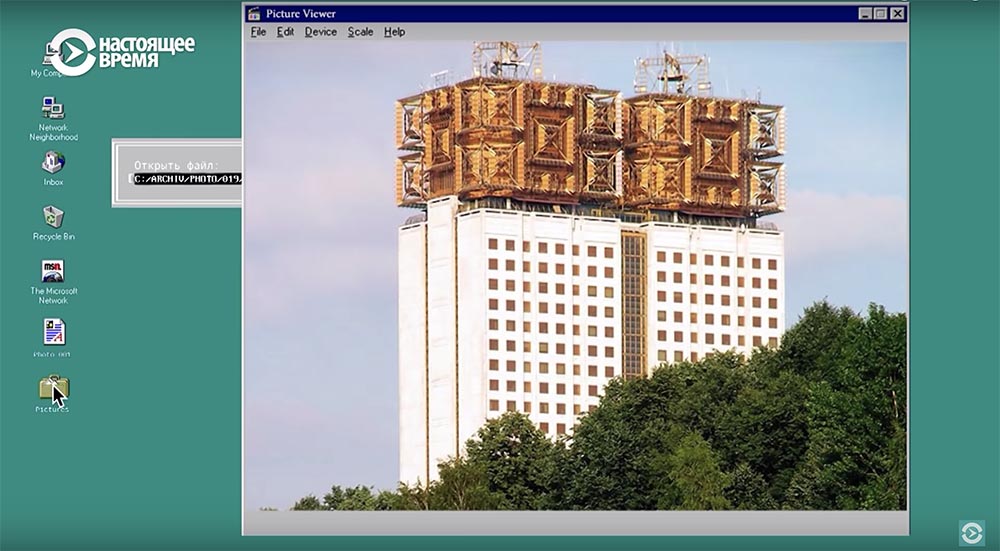
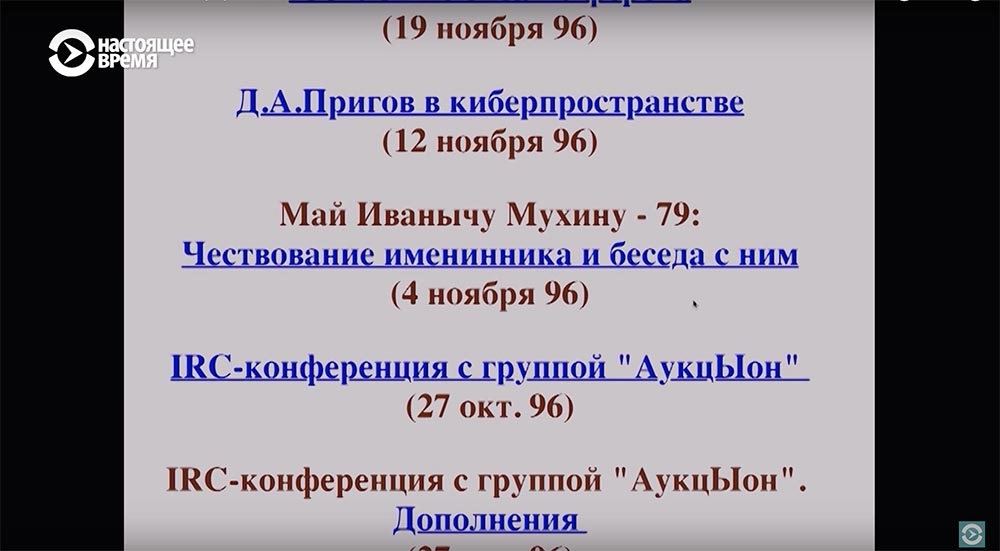

Then it was possible to call Pelevin and agree with him about something?
"In what sense"?
Well, he doesn’t communicate with anyone now.
“Well, we didn’t propose nonsense. These were interesting, breakthrough things. He sat behind a door in such a corner. ”
So that no one sees him?
“Well, yes, he narrowed his space so much and we are with him outside the door. And it was a huge former communal apartment. Not rebuilt even once, it was huge, absolutely monstrous, there were cockroaches, there was no heating, there were windows that looked on the towers of the Kremlin, because it was the top floor. "

Alexey Andreev. Writer and pioneer of Runet in 1994 - 1996, a graduate student at the University of West Virginia.
“A bunch of rooms and corridors, and you go and in one room you meet Nosik, in another Tyoma Lebedev. Well, somehow, like this, I arrived once and met all at once. And they came in, went out, and someone wrote articles at that time. Andrei Levkin sat and did Polit.ru for example, the first political news site. ”
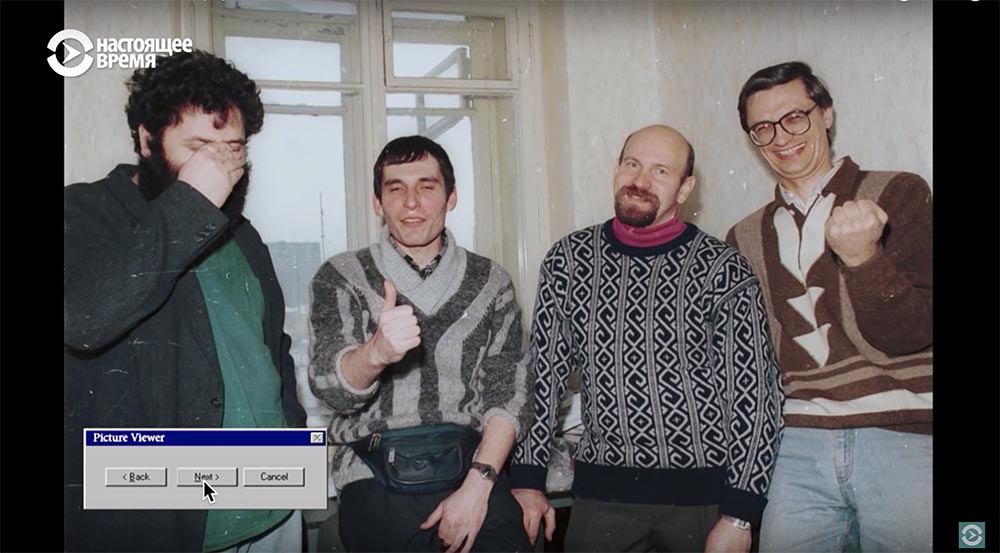
“But sat in the corner. Here people rock and roll "play ... That was the first Russian Internet. Something like this".
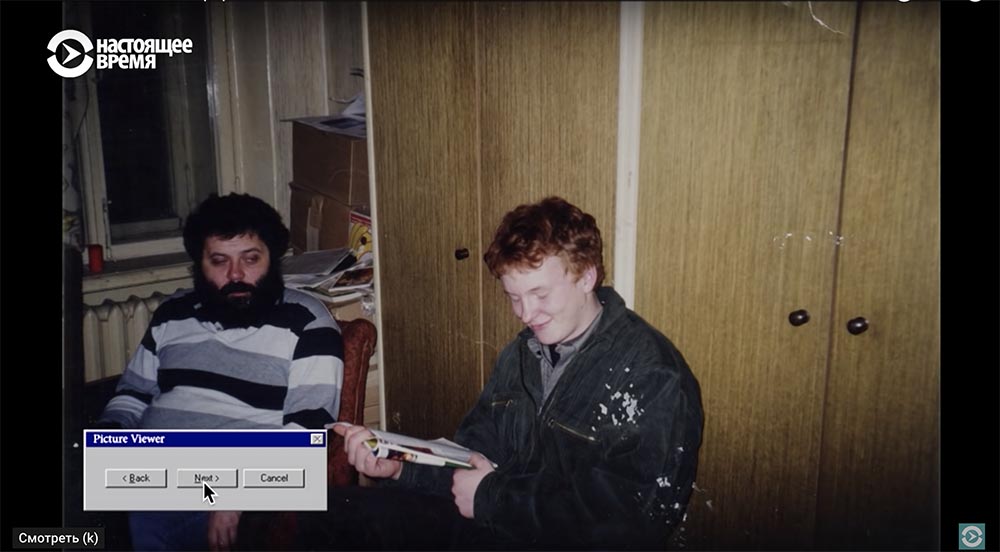
Dmitry Itskovich. Entrepreneur and pioneer of Runet.
“We really have the first publications of Nosik, Linor Goralik, Zhenya Gorny, the editor-in-chief, too, is not bullshit there, and so on ... They were all pretty strong, informative and then very peppy, drinking, having fun.”
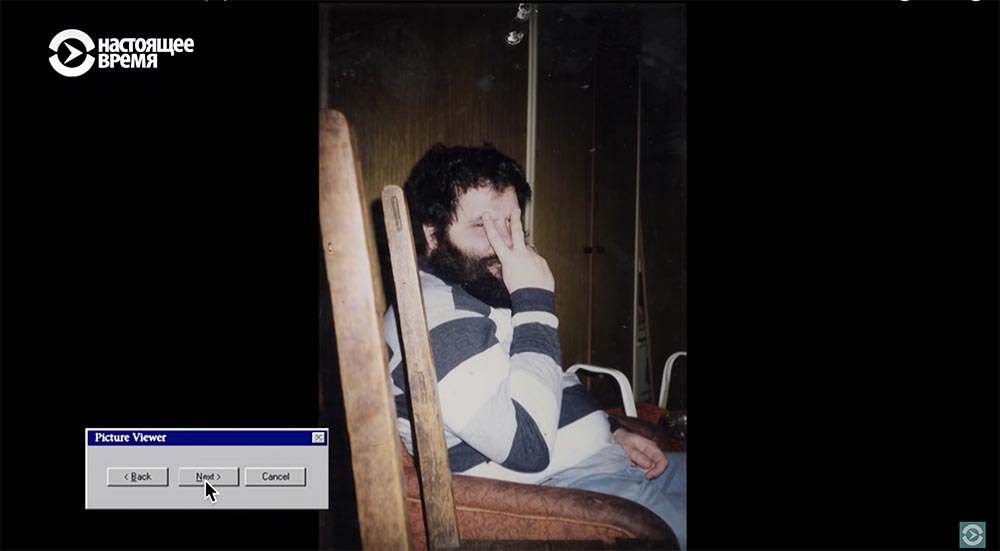
“There lived“ Mine Surveyors ”,“ Auctions “, this same Zhenya Fedorov,“ Tekilla Jazz “, from there they left and came to concerts.Well, such a conditional bohemian life, less than 12 people did not sit down for dinner. ”
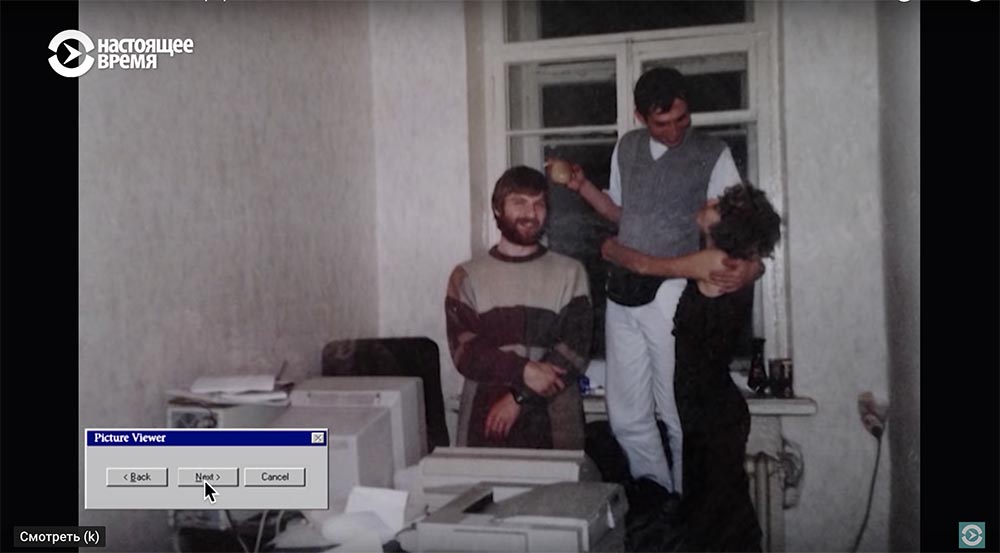
And you lived in this all the time or you had some kind of separate ...

"No, I lived there. Then he got tired and transferred it to the clubs themselves. ”



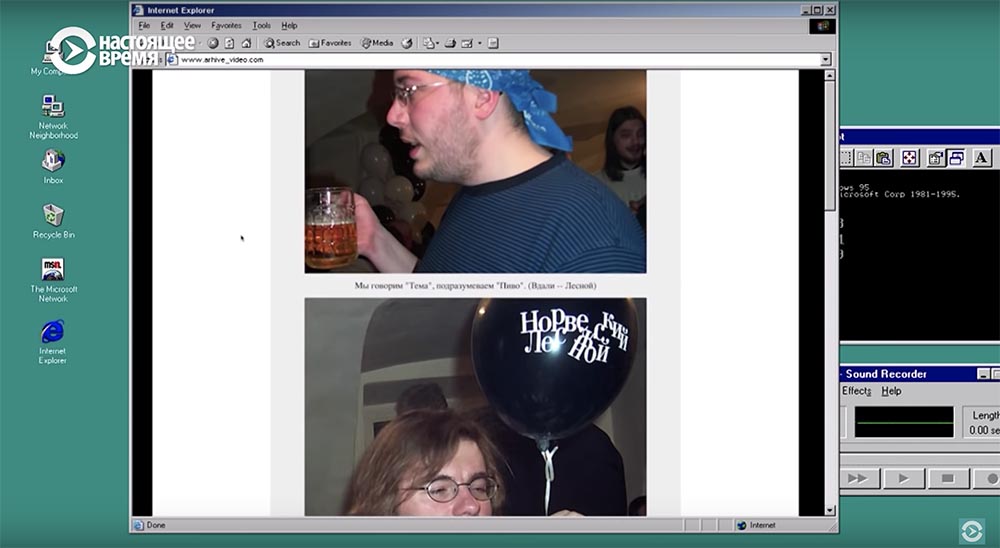
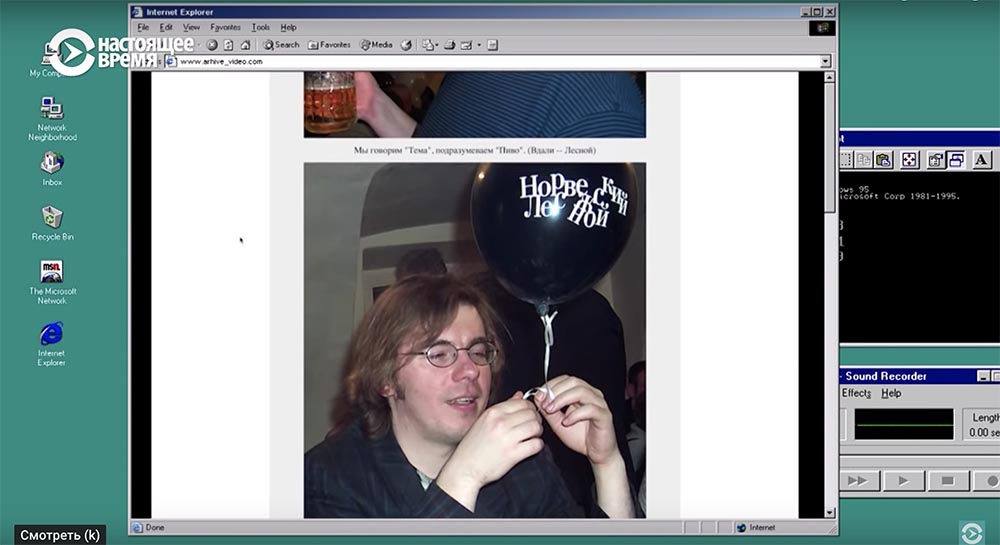



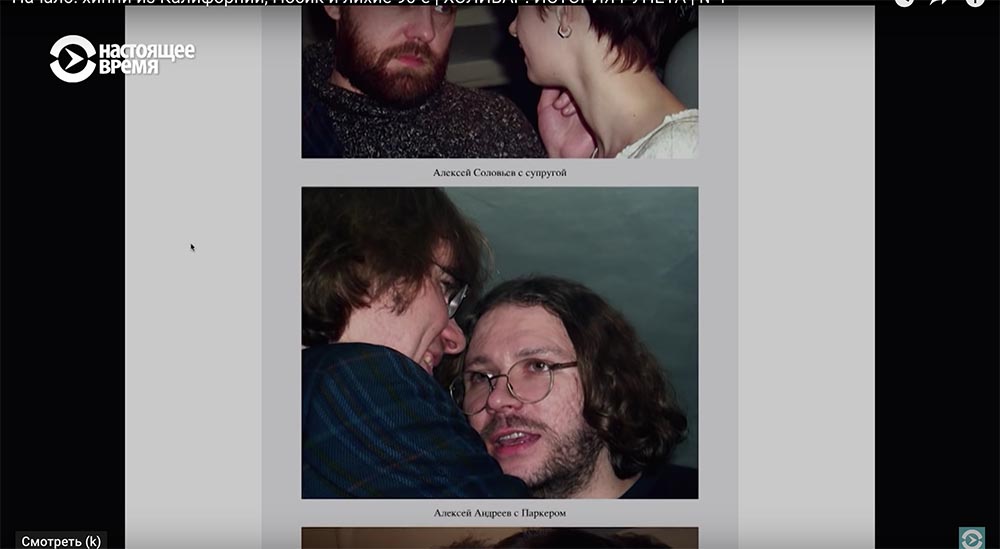
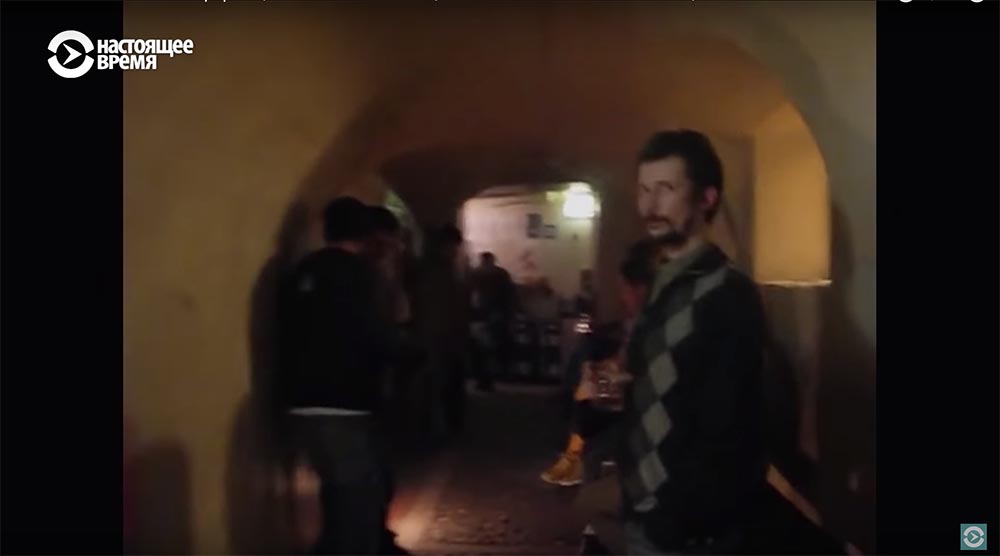

Itskovich, together with partners, opened the OGI Project, the first institution in Moscow where you could buy both alcohol and books. He cooled to the network, the time of the romantic onslaught passed, and making money offline was both easier and more fun. At some point, there was so much text in RuNet that contests of online literature came into fashion. The most famous Tenet competition, immediately began with a slap in the face of public taste.
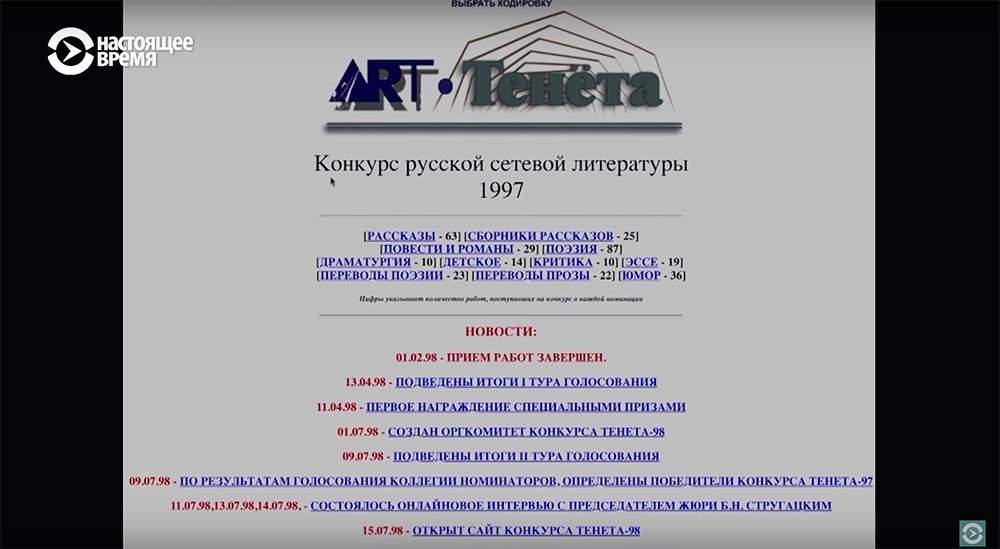
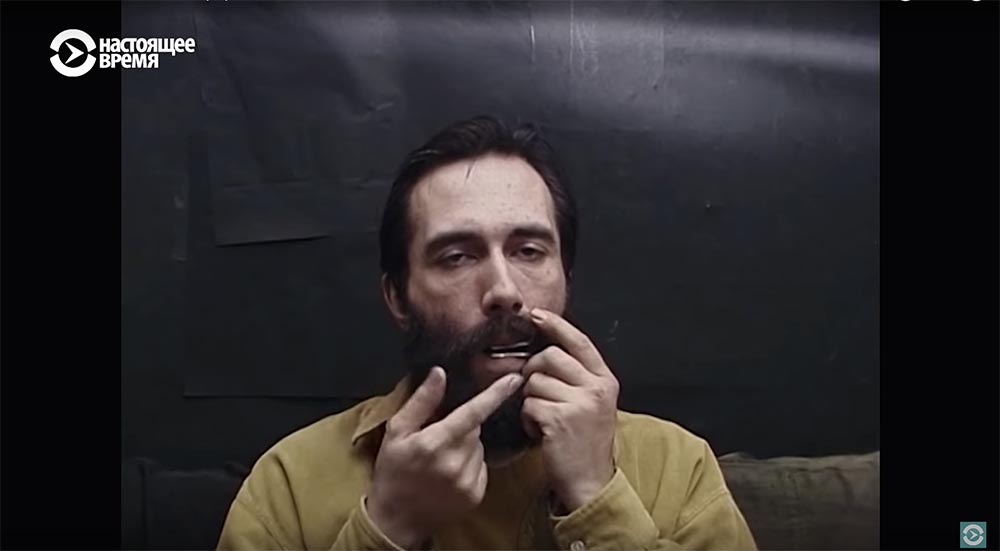
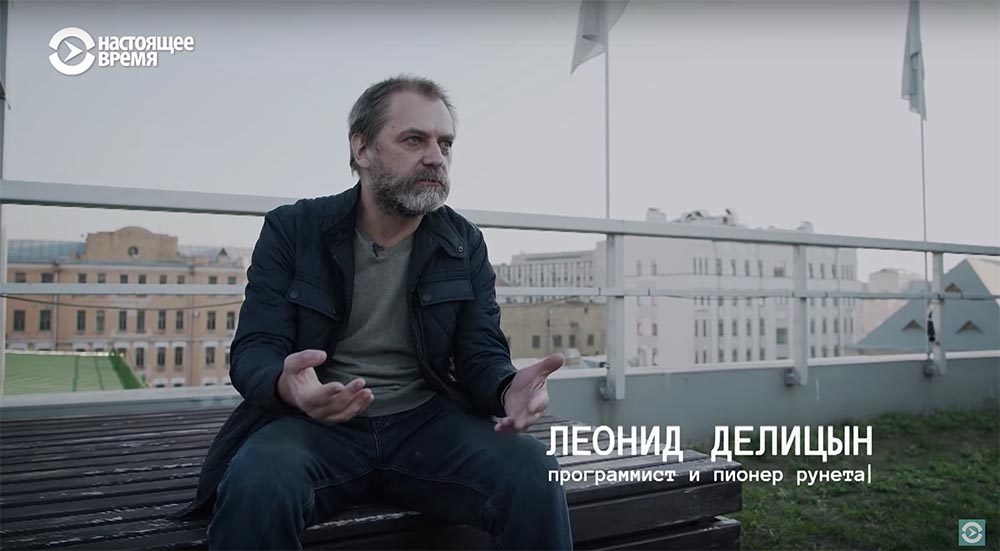
Leonid Delitsyn. Programmer and pioneer of Runet.
« 1997 , „ “, , , . . , , .».
« , , , , „ , , , -“. , , , „ “, . , „, , “.
, — „“. - , .
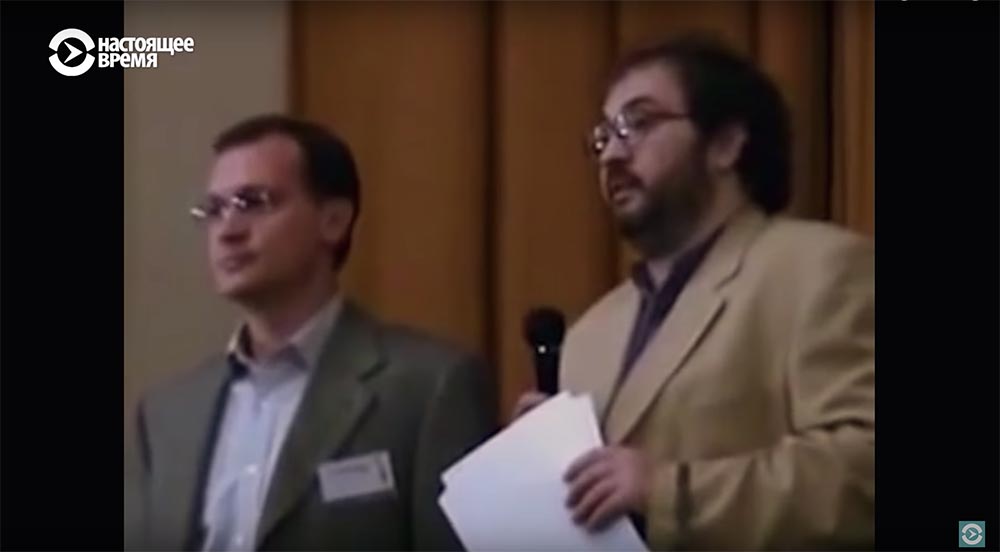
-, , , ? . .



„ “ : „ , “. „ “ , . , , . .

» , , , , , ".
. -.
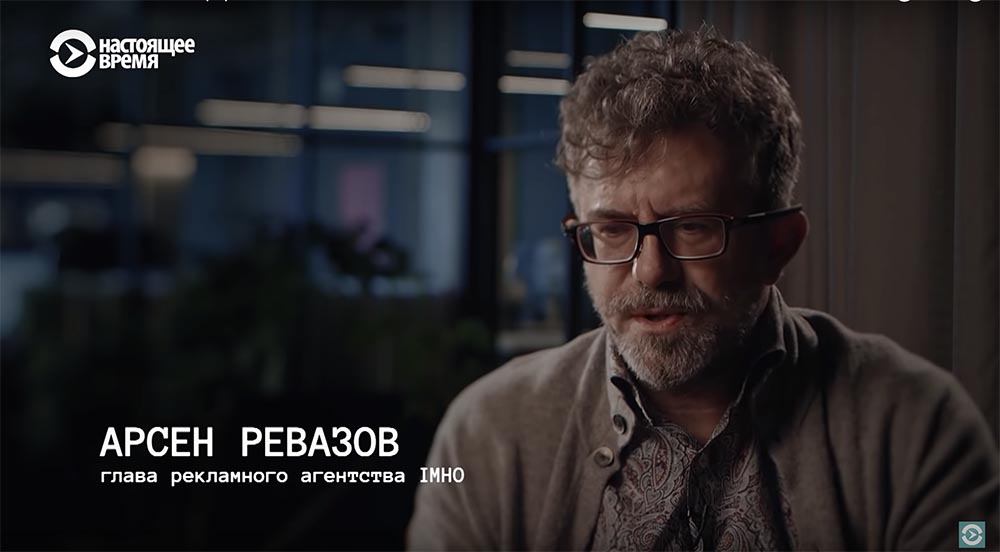
. IMHO.
« - , , „“, , - . - - , - , - . - ».

. , . — .
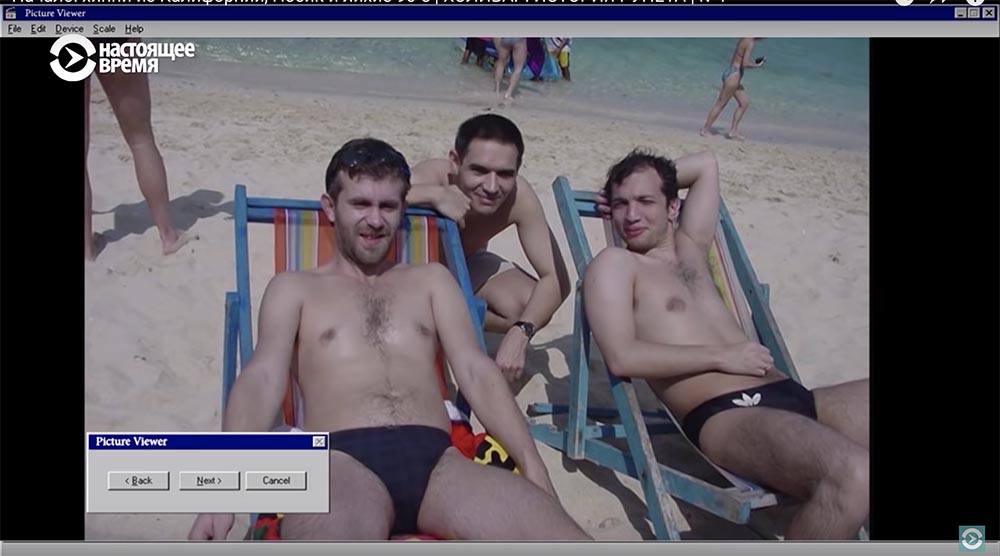
. IMHO.
« , , , . , , - , . . . . , , , ».
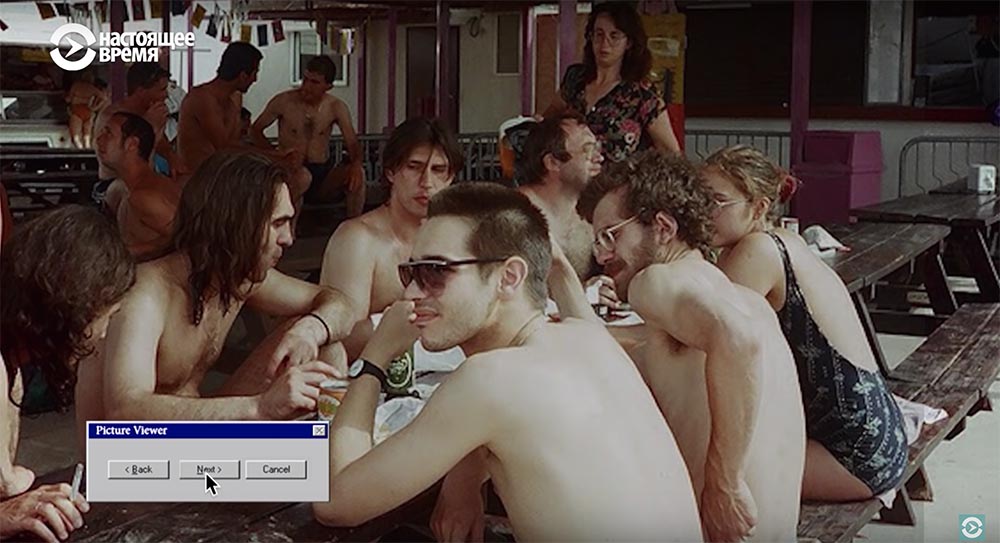

, , .

. .
« , , , . , , , ».
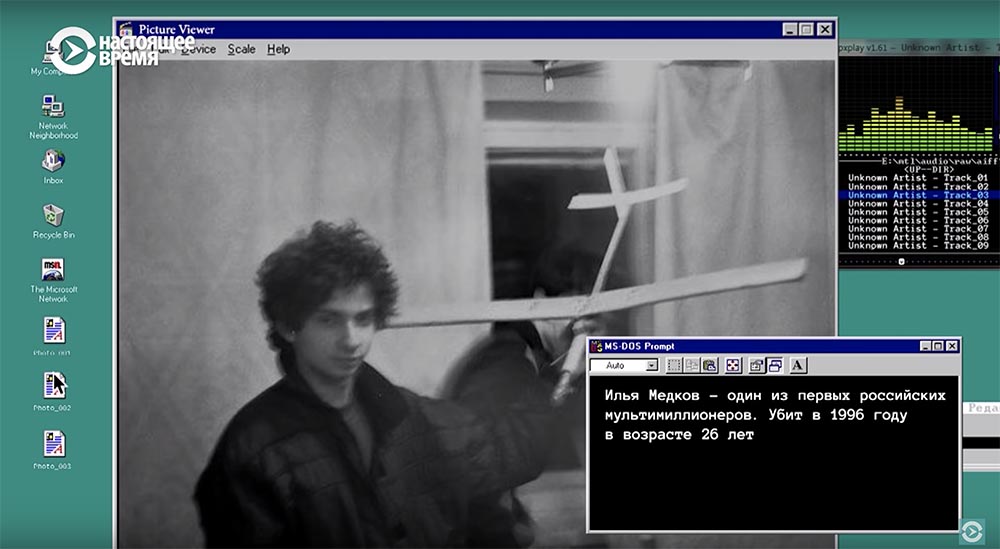
— , 1996 26 .
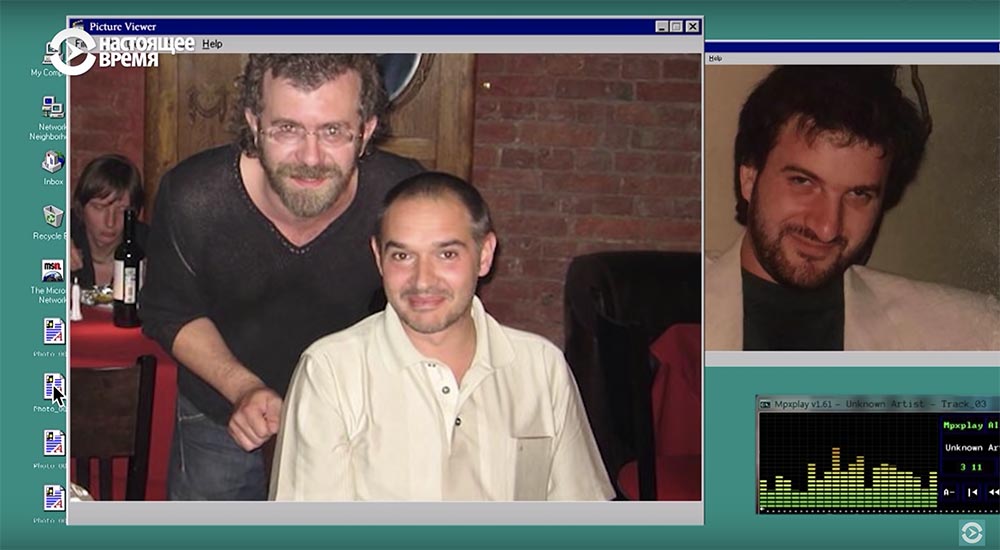
« , , , , , , ».
- . , , CITYLINE.

— , .

. 1996-2001 .
« . „ , “. , . , „ , , “, - . . , , . , -. , . , . 30%.
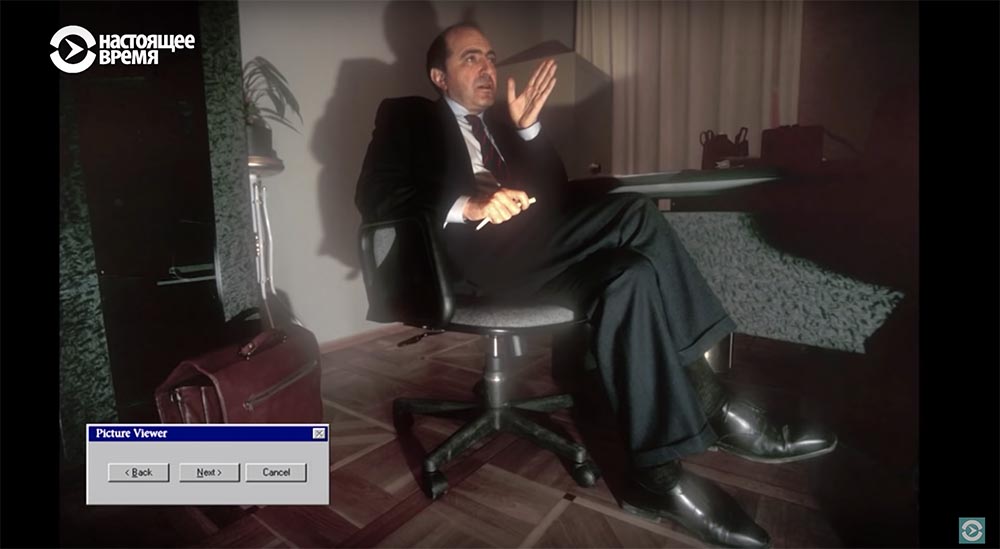

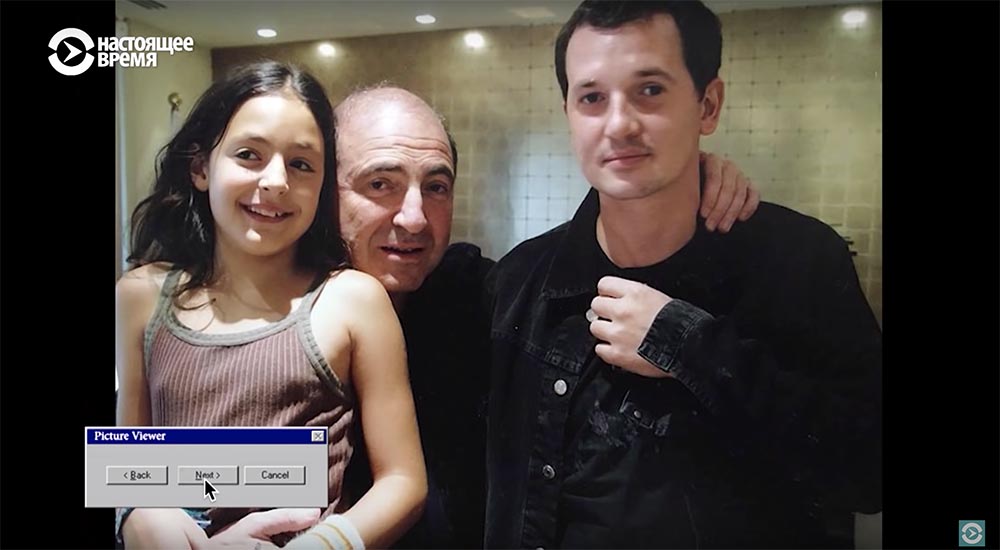
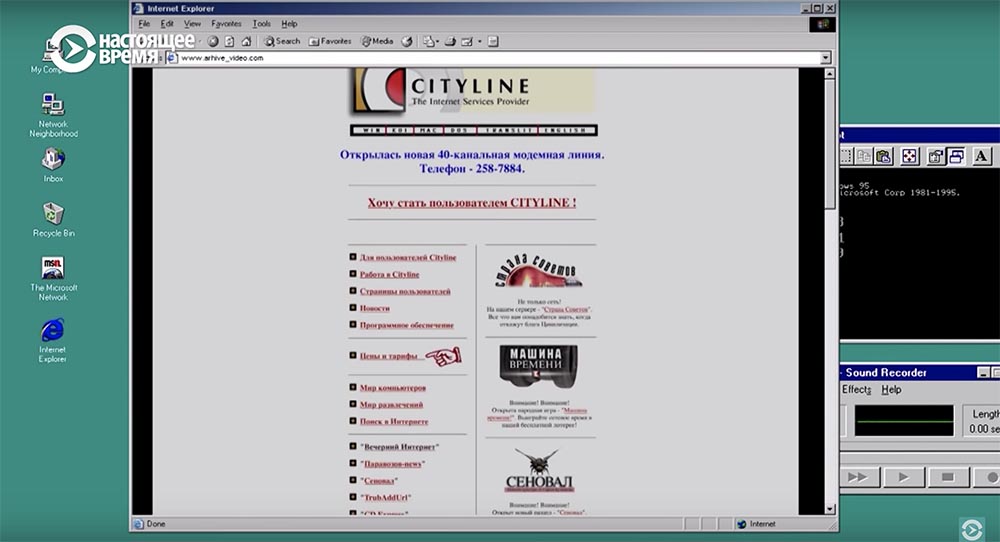
. .
» — . 50- , . , , , . , , , . . « » , ".
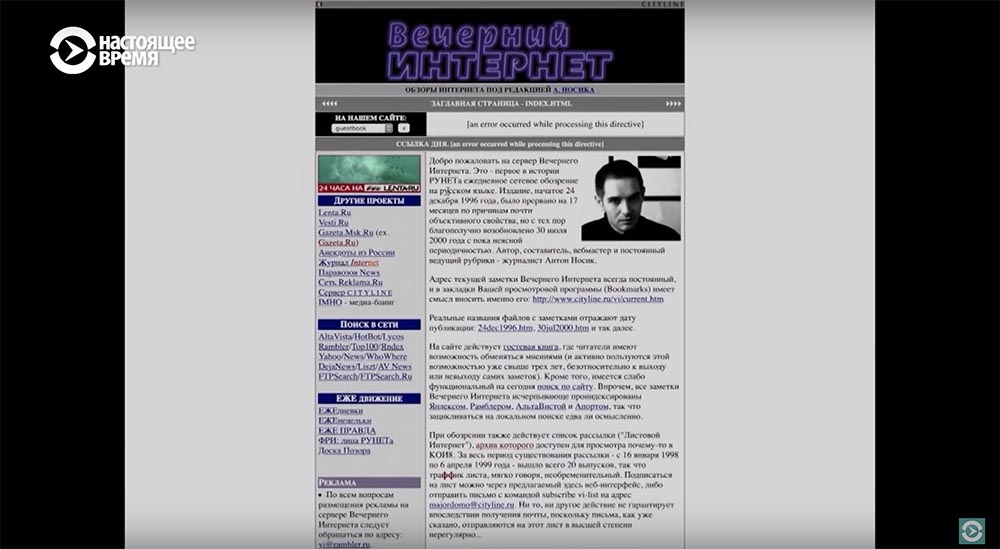
. IMHO.
« 36.60 , , flat fee, . , , , , ».

, , .
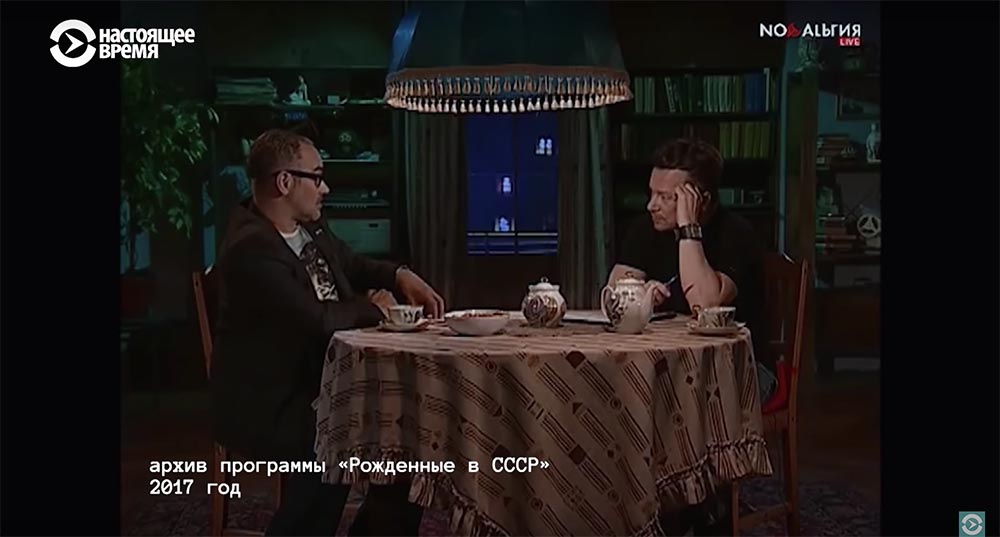
. .
« , 2 , . , , 1996 , . — 200 …
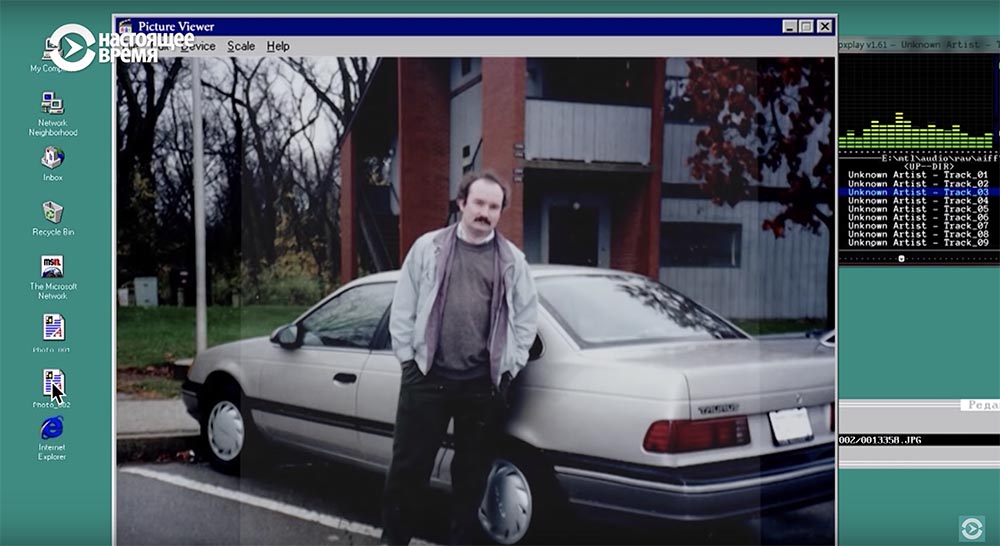
, . , . anekdot.ru , .


. anekdot.ru 1994-1998 .
» . , 1996 100, 1000 . . 1997 100, , , . - , , , ".
, , - , .

« , , , , . , , , , - , anekdot.ru. , , . , ».
5 , . , .
. anekdot.ru 1994-1998 .
« , , , , . , ».
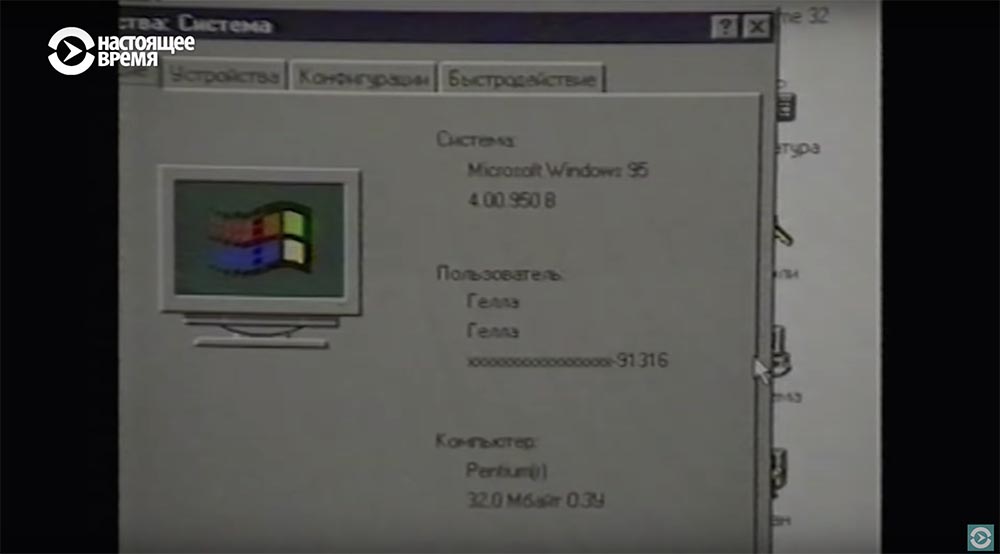
. . , .
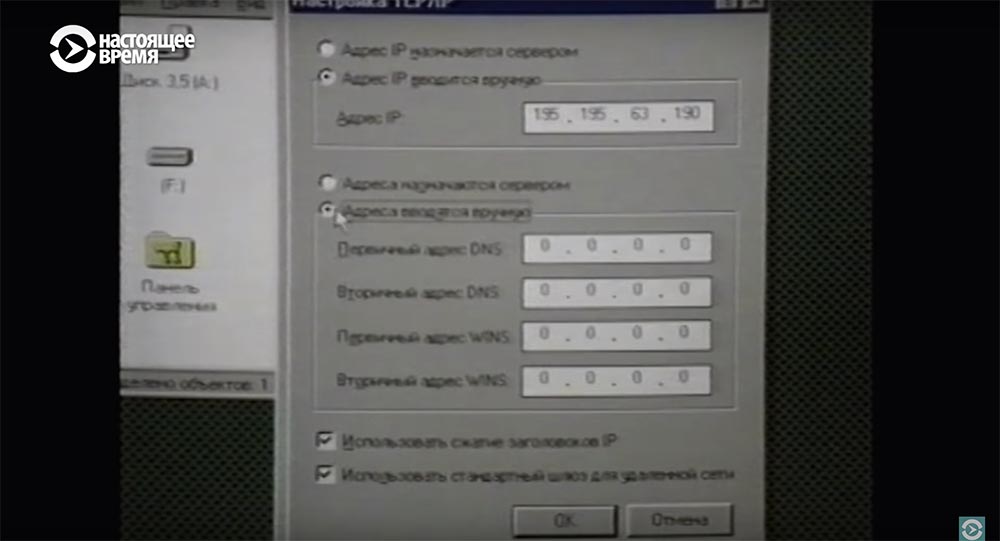
. .
«, - , . DDOS-, „“, , . . -. , , . , , , , , , -»…
. .
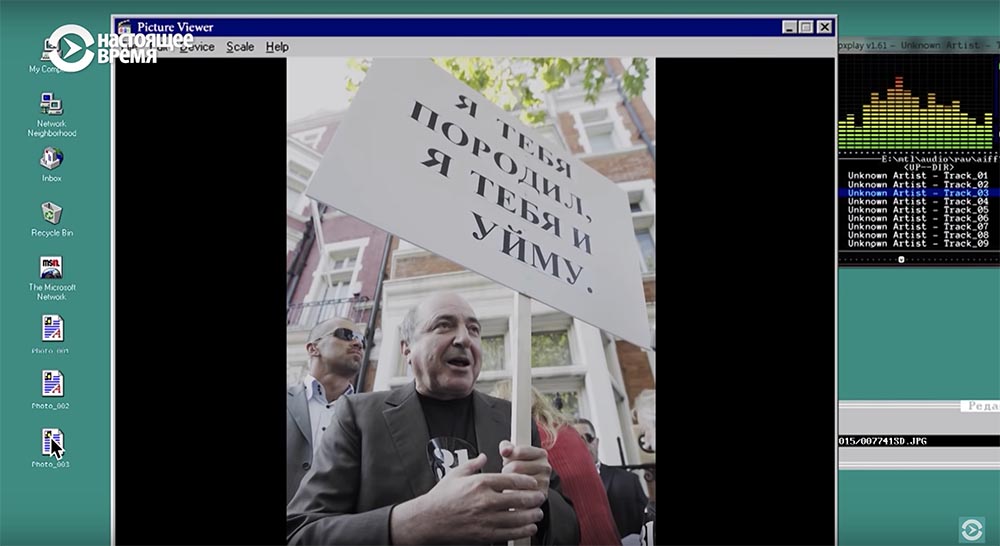
. 1996-2001 .
« , , . , ».
, .
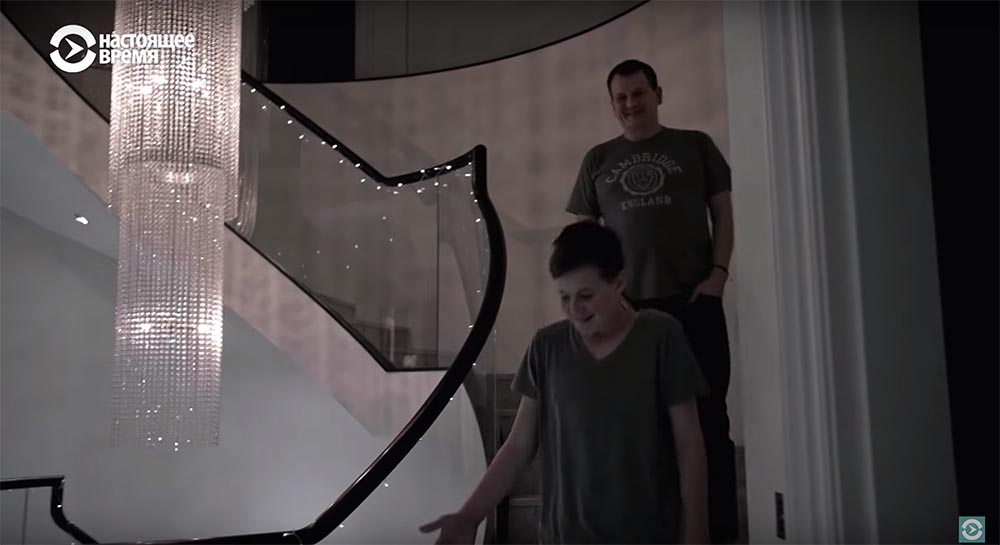
. 1996-2001 .
« , , , . , , , , . . -, . . . , . ».
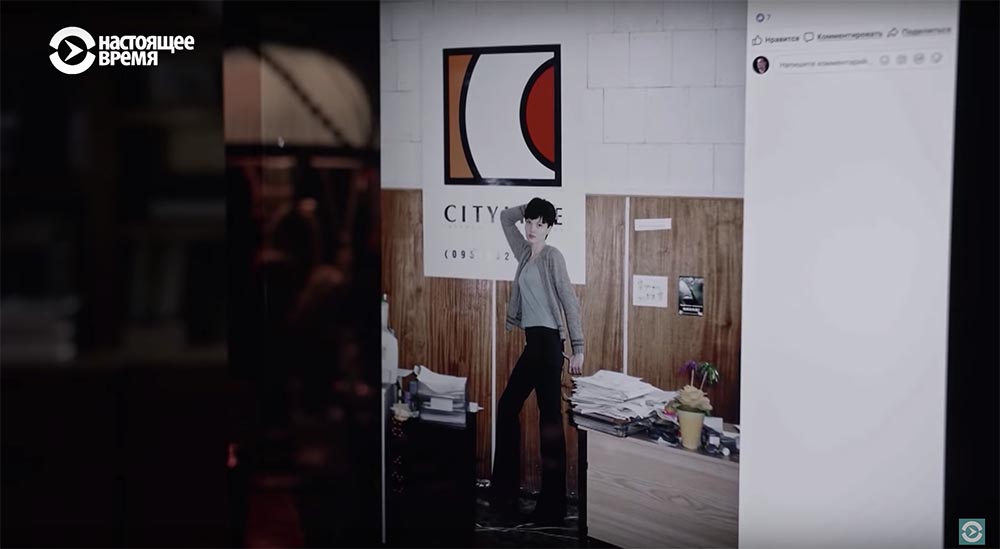


2000 30 . - . .
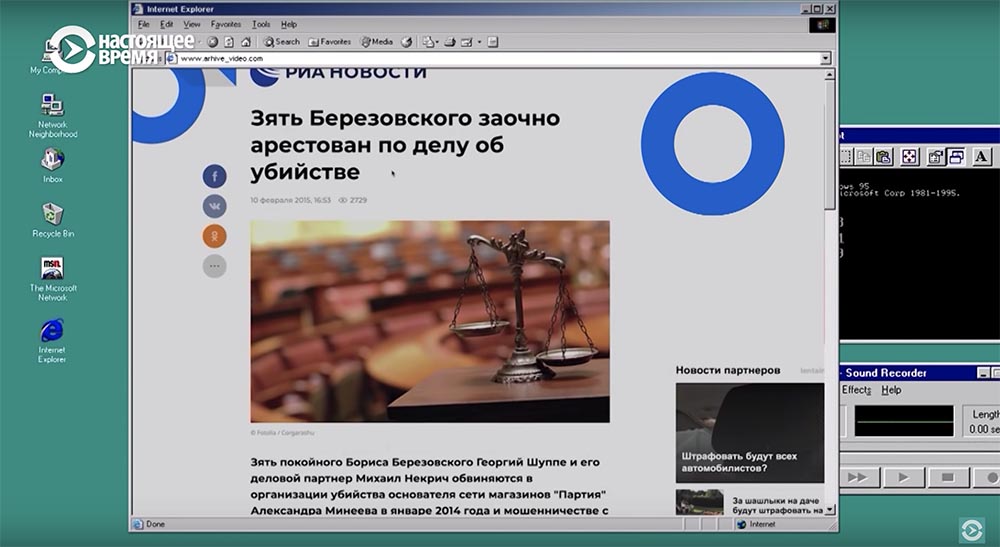
.

.

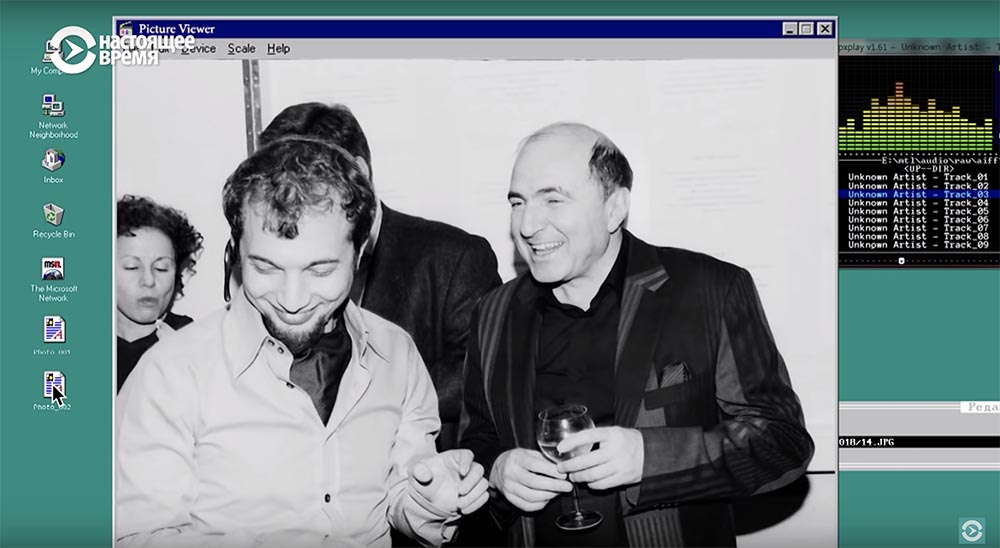
IMHO - .
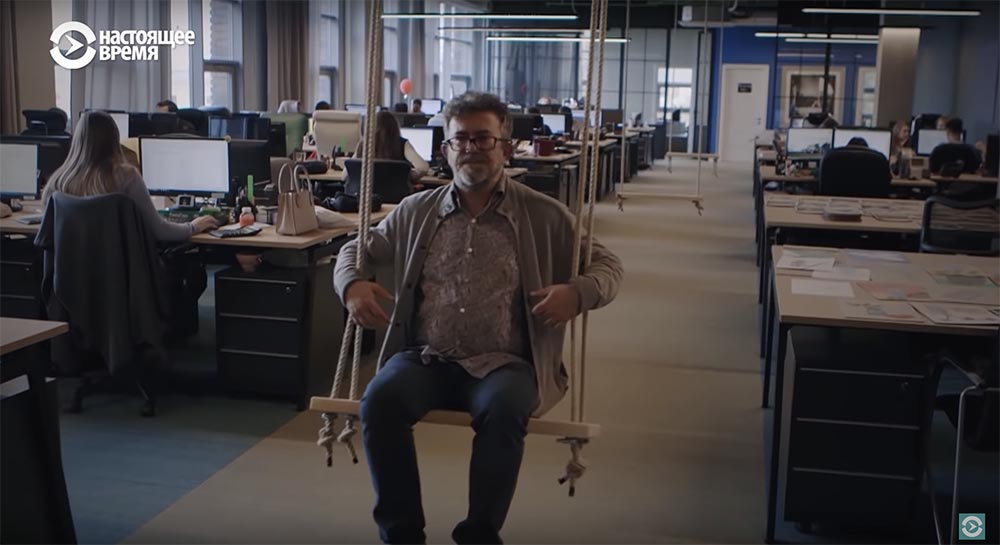
.
Thank you for staying with us. Do you like our articles? Want to see more interesting materials? Support us by placing an order or recommending it to your friends, a 30% discount for Habr users on a unique analogue of entry-level servers that was invented by us for you: The whole truth about VPS (KVM) E5-2650 v4 (6 Cores) 10GB DDR4 240GB SSD 1Gbps from $ 20 or how to divide the server? (options are available with RAID1 and RAID10, up to 24 cores and up to 40GB DDR4).
Dell R730xd 2 times cheaper? Only we have 2 x Intel TetraDeca-Core Xeon 2x E5-2697v3 2.6GHz 14C 64GB DDR4 4x960GB SSD 1Gbps 100 TV from $ 199 in the Netherlands! Dell R420 - 2x E5-2430 2.2Ghz 6C 128GB DDR3 2x960GB SSD 1Gbps 100TB - from $ 99! Read about How to Build Infrastructure Bldg. class c using Dell R730xd E5-2650 v4 servers costing 9,000 euros for a penny?

Joel Schatz - a scientist, visionary, idealist and businessman, in his youth loved experimenting with consciousness, psychedelic experience helped him to feel the interconnectedness of all elements of being.

Joel Schatz: Hippy and IT Entrepreneur.
“I wondered why without the drugs the world seems so disconnected, then I realized that my mission is to develop information tools to help us all bring these separate particles of reality together.”
Disclaimer . This article is a transcript of the wonderful film "Holivar" by Andrey Loshak. There are people who save time and love text, there are those who cannot watch videos at work or on the road, but happily read Habr, there are hearing-impaired people for whom the sound track is inaccessible or difficult to understand. We decided for all of them and you to decrypt excellent content. Who still prefers the video - link at the end.

In the midst of the Cold War, Schatz went to the USSR to establish communications. Joseph Goldin, a Soviet mystic, visionary and entrepreneur, became his friend and likeminded person. Goldin was also obsessed with the idea of communicating over borders, becoming the organizer of the first television bridges with America.

Teleconference Leningrad-Boston. 1986 year.
“I would like to say that in our TV commercials everything revolves around sex. Do you have such a television ad? ”
“But we have sex ... we have no sex and we are categorically against it.”
A cry from the audience: "We have sex, we have no ads."
"This is mistake"!
Goldin fanatically believed in the power of television. Schatz goes the other way, agrees on cooperation with the research institute of applied automatic systems. In short, VNIIPAS is the only organization in the Union with a dedicated channel to the west.

Joel Schatz: Hippy and IT Entrepreneur.
“I suggested connecting computers between the two countries, the director of the institute, Oleg Smirnov, liked the idea. But in order not to ask permission from the special services, he called it an experiment. So our first connection of computers of the two countries according to the X25 protocol took place under the auspices of the experiment. "

This program for the first time talks about the predecessor of the Internet, international teleconferences held at VNIIPAS. Thanks to the plot author, biochemist Klyosov, you can see how the network looked before the invention of the web.

Dmitry Klyosov. Biochemist and pioneer of the Internet.
“Here, in order to connect to a basic foreign computer here, the computer that I use is in Canada, I give a short command and connect to Canada. That's it, the connection happened and the system gives out the so-called menu, informing me that I have received five letters since my last work. These are the first two from Sweden, I already see in stride, one from the USA, then Finland and then New Zealand. And then it reports which conferences I work in, which new messages have accumulated. ”

A fragment of the program "Time". 1990 year.
A few days ago in Moscow, they signed an agreement not like any other joint Soviet-American enterprise.

Formally, the new organization is called Owls Teleport.

Here is Oleg Smirnov, director of VNIIPAS.

“It will be possible to send a text, table, schedule, letter. Say in San Francisco, New York or Canada. ”

This is Joel Schatz - Director of the San Francisco-Moscow Teleport.
“The creation of a joint venture with our American partners, a joint venture to Owls Teleport, will strengthen this process, which is going on in our country today. "Democratization, transparency and the search for the right and right partners in all areas."

Alexey Kolesnikov. Technical Director of Sovam Teleport 1990-1995
“Did the Union want to be friends with the Americans then?”
“I don’t know, I can’t say that they wanted to be friends, they wanted to become probably a part of a large, civilized world.”
Sovam Teleport became the first Internet provider in the USSR. In a couple of years, Schatz will return to America.
Joel Schatz: Hippy and IT Entrepreneur.
“I never dreamed of devoting my life to building a telecommunication business in Russia, I was more interested in the process of establishing relations in the world in order to avoid a nuclear war. At that moment, it seemed that the relationship was really normalizing, it was a very optimistic time and we decided to return. ”

Alexey Kolesnikov. Technical Director of Sovam Teleport 1990-1995
“He was generally a slob, he was kicked out of the US Army, he lived in the forest there with a hippie tribe, experimenting with acid (LSD). The end of the 60s of San Francisco, what to say is understandable ... Apparently he had some kind of vision about how this world should be arranged, and it should be arranged in such a way that people can communicate with each other. Now when I meet with him and talk, I ask, “Well, how do you like it? So everyone communicates with everyone, but they hate each other even more. " He says that apparently this is the essence of man. "
The emergence of the Internet coincided with the collapse of the Soviet system and Schatz and Goldin's dream came true, the curtain collapsed, both in the real world and in the virtual.

Alexey Kolesnikov. Technical Director of Sovam Teleport 1990-1995
Well, how old was I then, 25 or something, still young then, was hanging out there with Polunin Slava, with artists, with musicians: some kind of Obermaneken, Kino, Boris Grebenshchikov. Well, what else do you want? They were then interested in the open world, which was behind the Iron Curtain. And they were in the office, of course, there were some crazy performances at concerts at the concerts. They took the SS-20 rocket carrier, strategic ballistic missiles, planted Polunin with clowns on it and took them to Red Square.

Joel Schatz: Hippy and IT Entrepreneur.
“We did not have official permission, but the traffic police did not stop us because Joseph managed to convince them that the action was agreed at the top. And that was the whole mind. ”

Alexey Kolesnikov. Technical Director of Sovam Teleport 1990-1995
"We are all so young, thin, here is my beautiful face with a tail, well, Internet guy, what is there."

Owls Teleport was renamed Online Russia, then sold to Golden Telecom, which in turn absorbed Beeline for a record $ 4 billion. The enterprising hippie Schatz woke up a wealthy man.

Joel Schatz: Hippy and IT Entrepreneur.
“We got rich and it was a shock for us, because it was not the desire to make money that brought us to the Soviet Union, but the desire to bring benefits, to bring Russians and Americans closer together, so that the world becomes more secure.”

In the RuNet pedigree, of course, not only California hippies. After the invasion of Afghanistan, the Soviet Union came under sanctions. Under these conditions, the team of programmers managed to Russify the secretly exported American Unix operating system.

And build a network on its basis. Many Unixoids worked at the computer center at the Kurchatov Institute.

Alexey Soldatov. Head of the Exhibition Center of the IAE I.V. Kurchatov in 1985-1992, the father of Runet.
This is a network that united scientists, and most importantly, the network is flat. People communicate on the same level. Before that, if you want to get the results of another institute from this institute, you need your selector to contact that selector, and he will give instructions ... And then there was a horizontal connection, each and every one went through this intensive exchange. Articles, experiment results, and so on. "

In this photo, Soviet programmers who received the Council of Ministers award for creating the DEMOS (Interactive Unified Mobile Operating System) operating system, the domestic version of unix, young scientists were able to adapt advanced software to backward Soviet computers. The state did not punish the initiative, but encouraged.

Leonid Egoshin. Father Runet.
Awarded a prize, issued a medal, issued a diploma and 480 rubles each. We were handed over to us in the Kremlin in the hall under the dome, which can be seen from Red Square, right behind Lenin's Mausoleum. Do you know? Over there! And then we went out and photographed us and we got a famous photograph.

In the California house of Natalia Paremsky, the widows of programmer Mikhail Paremsky, they celebrate Shrovetide. Gathered old unixoid friends.

Natalia Paremskaya. Senior programmer.
“That was so. Paremsky dragged these tapes from Unix on his stomach, from somewhere he put them down. He dragged through the gate, through the Kurchatov Institute and then the people became interested. This was not the task of the party, the government, there was nothing like that. These were enthusiastic people. We were all friends. All of this was very wonderful, you know how PCB is some kind of movement. You know, it was like that from the heart. ”

KSP - amateur song club. A synonym for the movement of lovers of bard songs.
The Soviet Union has always encouraged defense science. Not surprisingly, the first to connect to the network were scientific centers related to nuclear physics. IHEP (Institute for High Energy Physics) was aimed at collaborating with CERN (European Center for Nuclear Research) and partly with America.
Leonid Egoshin. Father Runet.
“Because many laboratories of IHEP made equipment for joint experiments, communication was very necessary. The opportunity to connect then was through the director’s only Moscow telephone line. They put a modem on this line and I provided an email station using Unix and a Soviet computer. It was a breakthrough. ”

Mikhail Popov. Senior programmer.
“For an hour, we could chat with ten people from around the world and get an answer. This is like a thing that completely changed everything. No control! The feeling of completely new opportunities. ”

In 1991, there was a putsch, while Swan Lake was broadcast on television, providers told the world about what was happening in the country. Even then it turned out that the Internet could be an alternative source of information.

Alexey Soldatov. Head of the Exhibition Center of the IAE I.V. Kurchatov in 1985-1992, the father of Runet
They arranged a unit at the Kurchatov Institute, a spare one in Demos. Exchange information. There was information of this type: "I’m sitting on such and such a floor, tanks go to such and such an address." After that, Yeltsin’s appeal was announced and we instantly transmitted, well, as we, I phoned my comrades and implored them not to go to barricades, but to do my main business, because this is much more important. "

Once a week, programmer Alexei Rudnev tries to fly over the San Francisco Bay, “air his head,” as he says. The legendary Unixoid, one of the winners of the Council of Ministers Prize, Rudnev left Russia almost 20 years ago, like many from that memorable photo.

Alexey Rudnev. Father Runet.
“The first people who were leaders were the former Ministry of Taxes and Duties, who were very honest and very illiterate in business. By the end of the 90s, businessmen had already arrived, there was more business, less technology, that is, it was not interesting, people began to look for a new job, now our number is in the states, well, in my opinion 60/40 happened somewhere. It turned out a little more here, but again it’s all very arbitrary. ”

Gathered together, the fathers of Runet often recall their homeland, where their skills were not needed.
Leonid Egoshin. Father Runet.
“It was the nineties. Then there was wild capitalism, the developers were on the side. It turned out that they are not the main problem, the problem is where to get money, buy a channel, persuade, rent a room. ”

Alexey Rudnev. Father Runet.
“That is, at the first stage, the developers were the main ones, at the second stage the businessmen became the main ones, and now it’s normal.”

Leonid Egoshin. Father Runet.
“And the whole scheme began to move somewhere else, it became clear that the technical specialists would not be needed for a long time.”
Alexey Rudnev. Father Runet.
“Well, not a fact either. They will not be the main ones. ”
And many left.

Leonid Egoshin. Father Runet.
“Yes, my reason why, in general, we left, was this. That is, it was clear that they would not be needed for a long time. ”
Have you always appreciated developers in the USA?
Leonid Egoshin. Father Runet.
"What are you, of course."

Most of the Russian-speaking users in the early 90s are scientists and graduate students of Western universities and research centers. The IQ level in RuNet was appropriate.



Roman Leibov. Philologist and pioneer of Runet.
The beginning that I found - it really was like that. The time of some American blunders. Naturally, they were Russian-speaking for me, but at the same time they were absolutely inscribed in the local system. I thought that if you came to the Internet, then how can you not understand in English.

Alexey Andreev. Writer and pioneer of Runet in 1994 - 1996, a graduate student at the University of West Virginia.
There still of course was a certain intellectual qualification. That is, people who were in universities first came there. Or at least in some kind of IT companies, that is, there were no repeats in a sense. People were certainly strange and crazy, but they were not commonplace. They were all kind of interesting.

In 1993, the web appeared, the World Wide Web, browsers made the Internet accessible not only to scientists.


Maxim Moshkov. Creator of the Moshkov Library resource.
“Closer to 1994, another channel was dragged into the mathematics department. Already such a permanent real Internet. And we begin to do www, like all white people. We do not know what it is. We know that we need to draw a page, arrange it in a special way. We go to the Cernovo server, almost the first www-server in the world, there the homepage of the inventor of this language http is central, there you know how it happens “About me”, “About me”. We download it and it says such-and-such, the inventor of the mosaic (Mosaic is the first web browser with a garfic interface), http, it works there, then, “I have such and such a hobby”, “here is my photo “. All together the employees take this page, throw out the name of this dude, write themselves, replace the photo with their own, and each now has a personal page. In fact, this transfer, copy-paste, we don’t know anything, but we’ll copy everything, it just happened like that. ”





Dmitry Werner. The creator of the site anekdot.ru in 1994-1998 was a visiting professor at the University of Kentucky.
“In 1994, I found a website in the states, it was called Dazhdbog’s grandchildren, Dazhdbog’s Grandsons, it was done by Sergey Naumov, a graduate student of one of the American universities and there were instructions on how to Russify a computer, I Russified Unix workstation, it was a complete delight. After four years of living abroad, I suddenly saw Russian words on a computer. Russian Internet was very small then. ”




German Klimenko. Internet entrepreneur.
“We carefully hide how it all began, then there was the term“ two girls per hour ”, that is, when it was fido, there were 1200 bit modems, and now you sat and at your place two pictures of girls of erotic content passed. That is, nothing can be done - it was. They loaded very slowly, because there was the term “two girls per hour,” I'm sorry. ”



Artemy Lebedev Studio celebrates 23 years. Now it is almost 300 employees and thousands of completed projects. When the web appeared, the designer of all Russia was not yet twenty. He lived with his parents in the USA and was fond of computer graphics.




Artemy Lebedev. Designer of all Russia.
“I came here and turned out to be the first person who began to draw websites for money to people and so on. Among my first customers, 1996-1997, were Hewlett-Packard, the Central Bank of Russia, I made the first website of the State Duma. That is, I was sitting at home in my kitchen, they came and ordered, because there was no one else to go to. I worked for days and did one thing that then 5 people began to do in one day, then I had a working day of 36 hours. I closed the curtains, I had two two-liter bottles of cola and pizza with cigarettes and only worked on this fuel. "




Roman Leibov. Pioneer Runet.
“Look, now we see Lotman. Moving we continue to see Lotman. "

"And here Lotman begins to decay and turn into Cthulhu or something like that."

So far, the quality of communication allowed downloading 2 girls per hour. The Internet was about text, not about pictures. It is symbolic that several pioneers of Runet were students of the great Lotman at the University of Tartu.

Roman Leibov. Pioneer Runet.
“Lotman invented the semiosphere, the idea of the semiosphere is that a person is surrounded by signs that they themselves produce. When the Internet came, we saw what the semiosphere is. ”

Another student of Lotman Dmitry Itskovich is the owner of popular drinking establishments today. In the mid-90s, in his apartment in Kalashny Lane, the editors of the first online publications with the simple names zhurnal.ru and polit.ru were located, this was the place where the Russian humanitarian Internet was forged.




Dmitry Itskovich. Entrepreneur and pioneer of Runet.
“They gave us a modem and we had almost the first ethernet in Moskvka right into the“ golden brains ”. From the window of my apartment a direct beam hit the Academy of Sciences, the Internet came to us through it, and I just had 5 computers in my room and someone was constantly doing something on them. We were the first to make IRC conferences with Prigov, with Auktsyon, with Pelevin. ”



Then it was possible to call Pelevin and agree with him about something?
"In what sense"?
Well, he doesn’t communicate with anyone now.
“Well, we didn’t propose nonsense. These were interesting, breakthrough things. He sat behind a door in such a corner. ”
So that no one sees him?
“Well, yes, he narrowed his space so much and we are with him outside the door. And it was a huge former communal apartment. Not rebuilt even once, it was huge, absolutely monstrous, there were cockroaches, there was no heating, there were windows that looked on the towers of the Kremlin, because it was the top floor. "

Alexey Andreev. Writer and pioneer of Runet in 1994 - 1996, a graduate student at the University of West Virginia.
“A bunch of rooms and corridors, and you go and in one room you meet Nosik, in another Tyoma Lebedev. Well, somehow, like this, I arrived once and met all at once. And they came in, went out, and someone wrote articles at that time. Andrei Levkin sat and did Polit.ru for example, the first political news site. ”

“But sat in the corner. Here people rock and roll "play ... That was the first Russian Internet. Something like this".

Dmitry Itskovich. Entrepreneur and pioneer of Runet.
“We really have the first publications of Nosik, Linor Goralik, Zhenya Gorny, the editor-in-chief, too, is not bullshit there, and so on ... They were all pretty strong, informative and then very peppy, drinking, having fun.”

“There lived“ Mine Surveyors ”,“ Auctions “, this same Zhenya Fedorov,“ Tekilla Jazz “, from there they left and came to concerts.Well, such a conditional bohemian life, less than 12 people did not sit down for dinner. ”

And you lived in this all the time or you had some kind of separate ...

"No, I lived there. Then he got tired and transferred it to the clubs themselves. ”











Itskovich, together with partners, opened the OGI Project, the first institution in Moscow where you could buy both alcohol and books. He cooled to the network, the time of the romantic onslaught passed, and making money offline was both easier and more fun. At some point, there was so much text in RuNet that contests of online literature came into fashion. The most famous Tenet competition, immediately began with a slap in the face of public taste.



Leonid Delitsyn. Programmer and pioneer of Runet.
« 1997 , „ “, , , . . , , .».
« , , , , „ , , , -“. , , , „ “, . , „, , “.
, — „“. - , .

-, , , ? . .



„ “ : „ , “. „ “ , . , , . .

» , , , , , ".
. -.

. IMHO.
« - , , „“, , - . - - , - , - . - ».

. , . — .

. IMHO.
« , , , . , , - , . . . . , , , ».


, , .

. .
« , , , . , , , ».

— , 1996 26 .

« , , , , , , ».
- . , , CITYLINE.

— , .

. 1996-2001 .
« . „ , “. , . , „ , , “, - . . , , . , -. , . , . 30%.




. .
» — . 50- , . , , , . , , , . . « » , ".

. IMHO.
« 36.60 , , flat fee, . , , , , ».

, , .

. .
« , 2 , . , , 1996 , . — 200 …

, . , . anekdot.ru , .


. anekdot.ru 1994-1998 .
» . , 1996 100, 1000 . . 1997 100, , , . - , , , ".
, , - , .

« , , , , . , , , , - , anekdot.ru. , , . , ».
5 , . , .
. anekdot.ru 1994-1998 .
« , , , , . , ».

. . , .

. .
«, - , . DDOS-, „“, , . . -. , , . , , , , , , -»…
. .

. 1996-2001 .
« , , . , ».
, .

. 1996-2001 .
« , , , . , , , , . . -, . . . , . ».



2000 30 . - . .

.

.


IMHO - .

.
Thank you for staying with us. Do you like our articles? Want to see more interesting materials? Support us by placing an order or recommending it to your friends, a 30% discount for Habr users on a unique analogue of entry-level servers that was invented by us for you: The whole truth about VPS (KVM) E5-2650 v4 (6 Cores) 10GB DDR4 240GB SSD 1Gbps from $ 20 or how to divide the server? (options are available with RAID1 and RAID10, up to 24 cores and up to 40GB DDR4).
Dell R730xd 2 times cheaper? Only we have 2 x Intel TetraDeca-Core Xeon 2x E5-2697v3 2.6GHz 14C 64GB DDR4 4x960GB SSD 1Gbps 100 TV from $ 199 in the Netherlands! Dell R420 - 2x E5-2430 2.2Ghz 6C 128GB DDR3 2x960GB SSD 1Gbps 100TB - from $ 99! Read about How to Build Infrastructure Bldg. class c using Dell R730xd E5-2650 v4 servers costing 9,000 euros for a penny?
All Articles